
I traveled to Iceland in October 2019, after several years of planning. You can’t help but love those beautiful photos of Iceland doing the rounds on social media. The Northern Lights, dramatic landscapes, sublime ice caves, geysers and humungous waterfalls, all appealed to the photographer in me. I traveled around this windswept island in a quest to capture my best photographs. But by the end of the trip, I realised that there is more to Iceland than what we see on the internet.
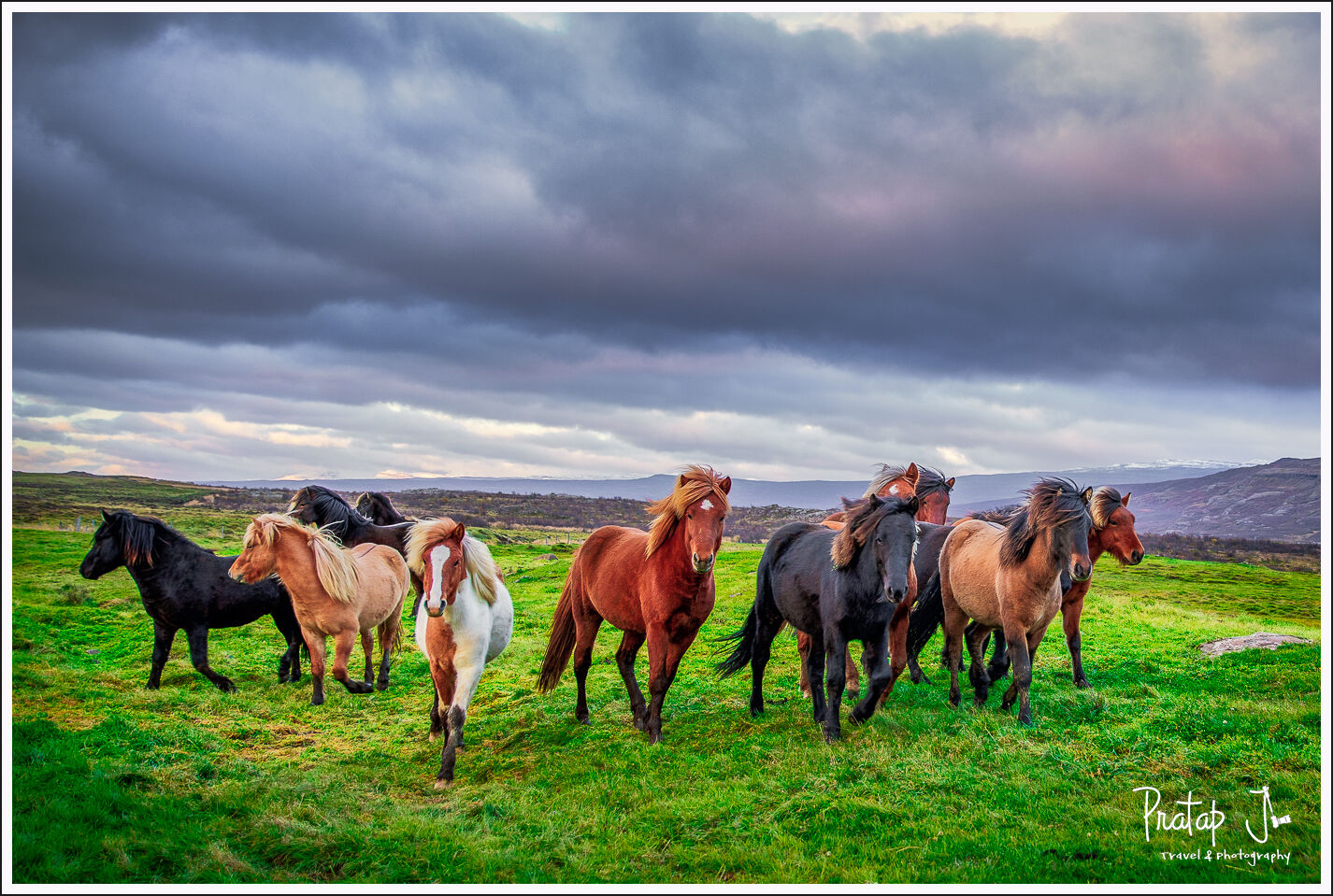
Reaching Iceland
I was comfortably stretched in my extra wide business class seat, when the pretty airhostess whispered in my ear that dinner is to be served. I opened my eyes to see a huge tray of sumptuous food that she gently placed in front of me. As I switched off the music that I was listening to, and looked out of the window, I saw distant city lights gleaming like jewels below me. I was surely in heaven, except that I was dreaming. I was actually in the economy class seat of a Lufthansa A380 airline, feeling like I had already traveled half the world. Leaving home 5 hours prior to the 4 am departure from Bengaluru, coupled with the anxiety of the flight attendent not waking me up for food, left me tired but yet unable to sleep.
From my hometown Bangalore, it took me about 19 hours to reach Reykjavik, the capital of Iceland. This included a short layover of two hours in Frankfurt. While speaking to a few tourists in Iceland, I realized that a 19-hour voyage is considered ‘too long’ for many. But for us outdoor photographers in India, going to any beautiful place within or outside the country always involves long travel.
The Ring Road Tour
My ring road tour was to commence the morning after I landed. Many natural attractions lie on this route, which circumnavigates the country. Public transport is next to non-existent, so a private bus tour or self-drive is your best bet. The roads are excellent for most part. It is hard to get lost on this route, and Google Maps works fine. However, driving continuously can get tiring, and you cannot park your car anywhere and everywhere on the ring road. So doing a bus tour is not a bad option at all. Our guide-cum-driver was extremely knowledgable, witty, and engaging. I learnt so much more about Iceland, from a local, than from browsing the internet.
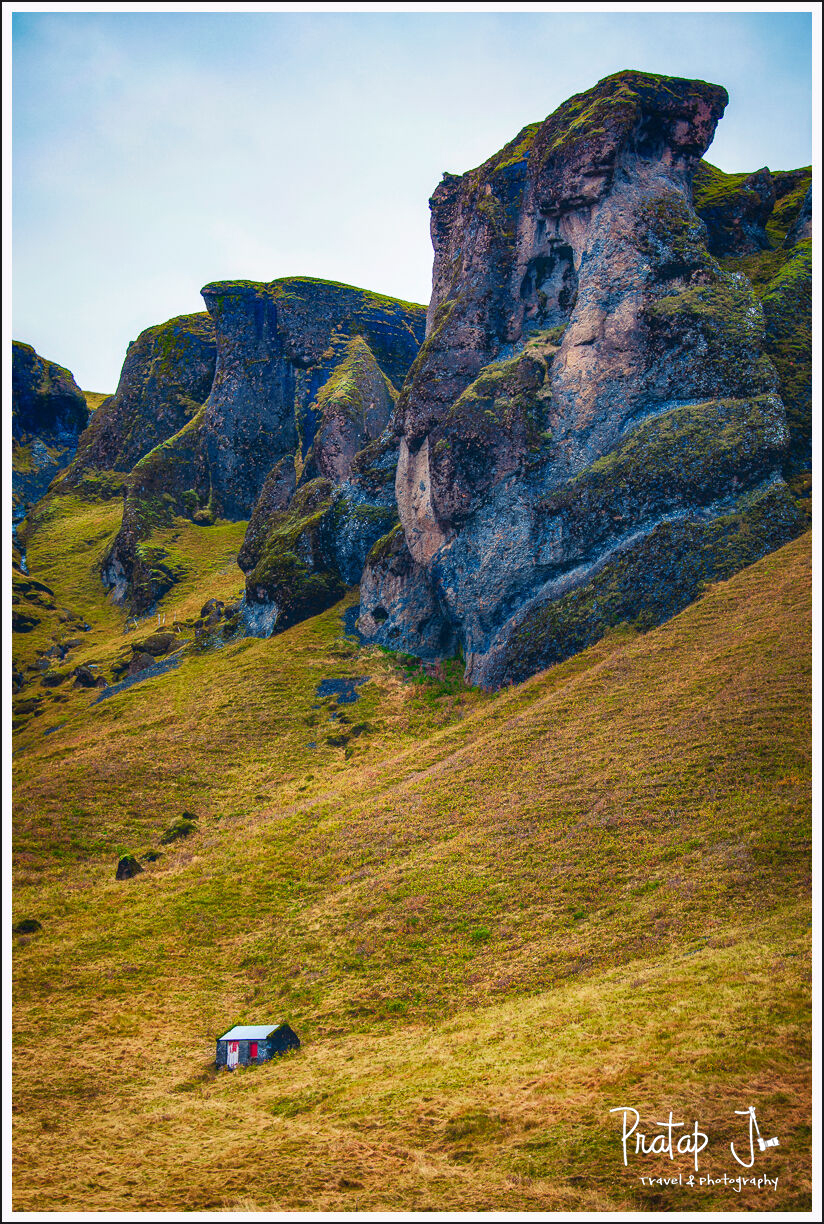
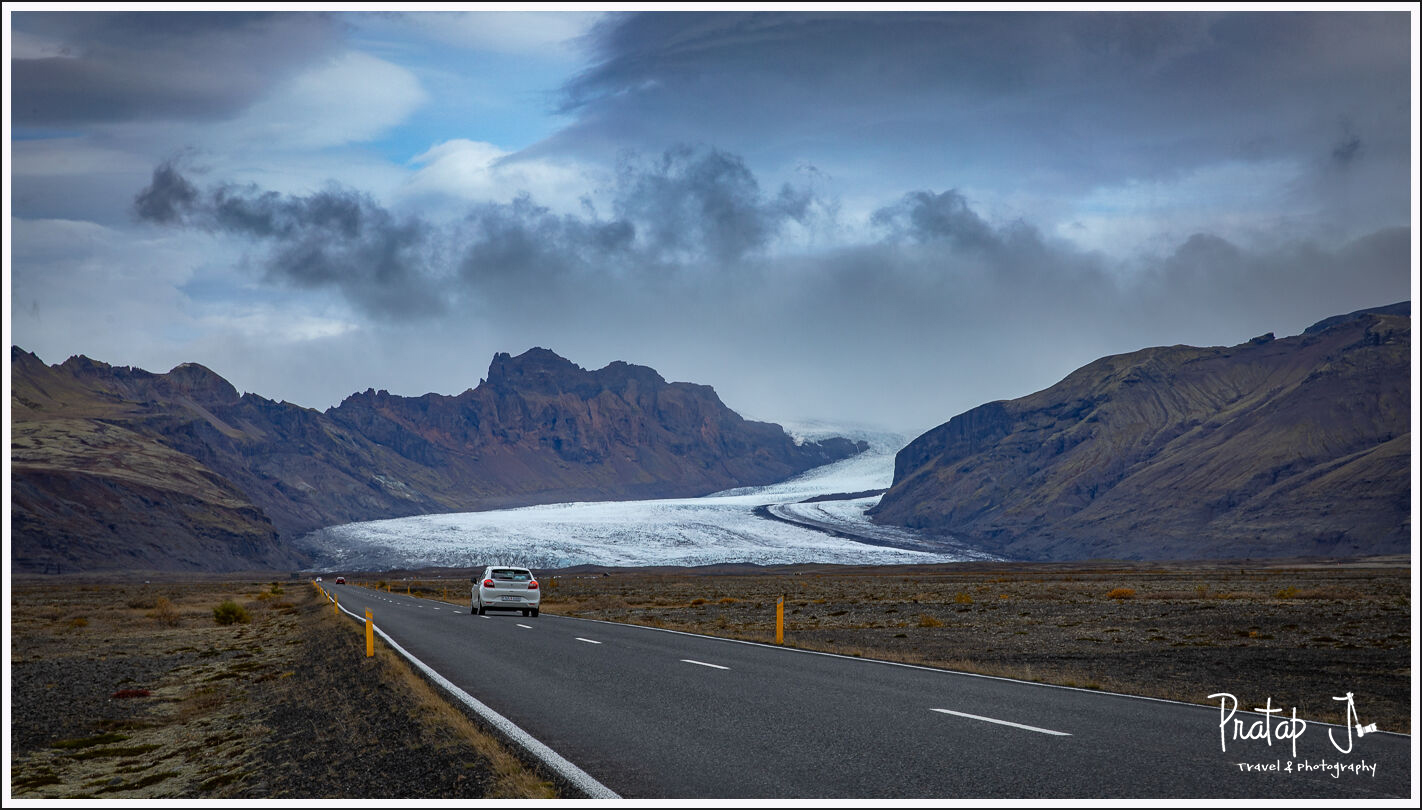
Day 1: The Golden Circle
On the first day, we were to travel to the southernmost part of Iceland, on a route known as the Golden Circle. Tourist spots on the Golden Circle are a great way to get introduced to what the country has to offer. In most parts of the world, Mother Earth’s catastrophic outbursts happened millions of years ago, but Iceland’s geological history is relatively short. It is home to a hundred odd volcanoes which give rise to geothermal springs and geysers. Melting glaciers feed rivers, that in turn contribute to beautiful waterfalls.
The places on the Golden Circle set the theme for the rest of my stay in Iceland. Iceland’s history is all about how the Nords adapted to glaciers, volcanoes and earthquakes after they settled down in 870 AD. The people in these parts had to overcome great odds to survive. The weather in Iceland is unpredictable and harsh. But yet, the Vikings turned into poets and artists after settling down. Such is the beauty of Iceland. So, if you are the types who goes to Rohtang Pass, plays bhangra music, and starts dancing when you see snow, you will never get the subtle message in Iceland’s beauty. You are better off roaming around in India and not embarrassing us in other countries.
Our first halt was Gullfoss, or The Golden Waterfall. This plunge waterfall is massive and lends its name to the Golden Circle. It is here that I realised how deceptive photographs can get. It not until you stand in front of them, do you feel the scale of these natural attractions.
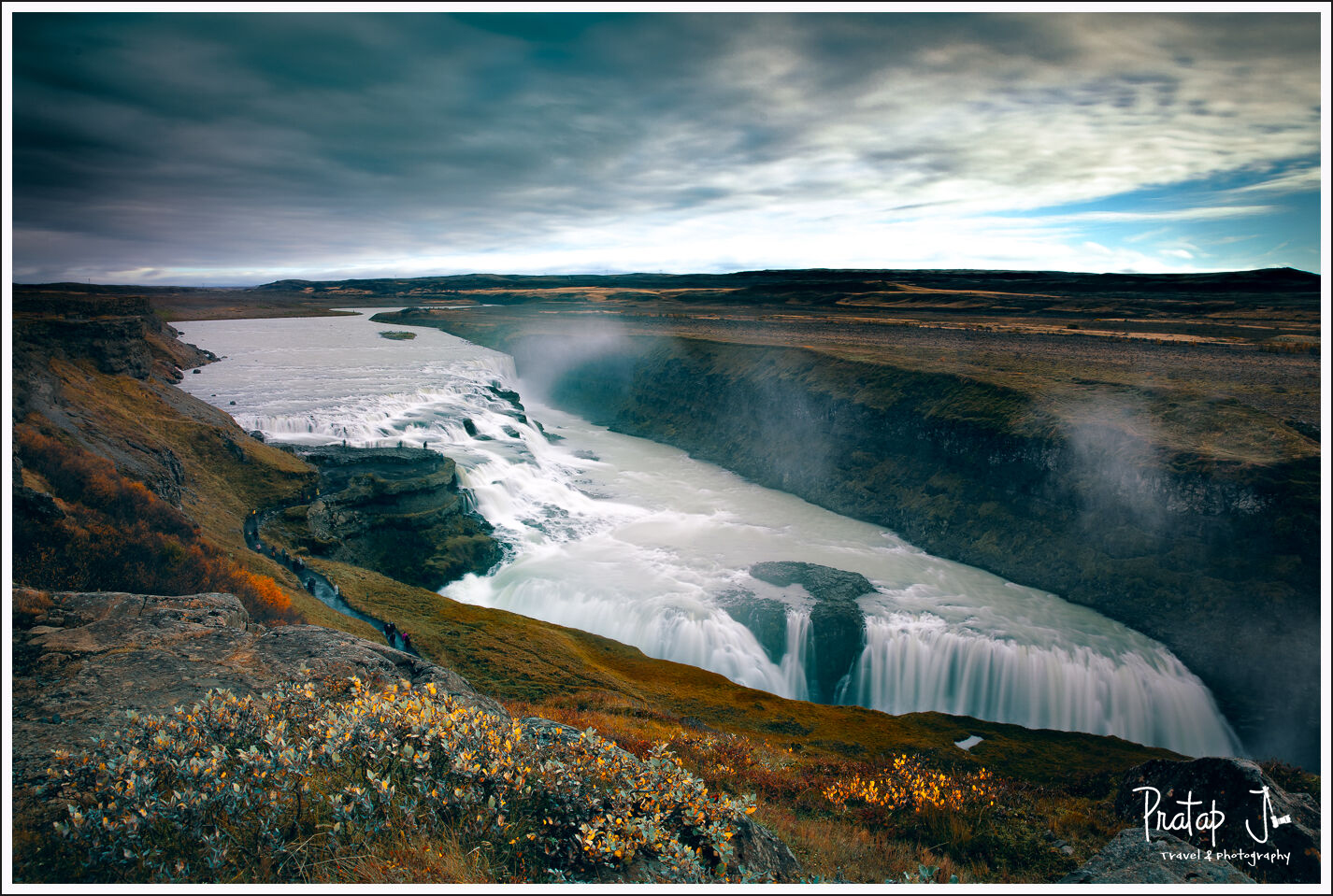
Seljalandsfoss is a very beautiful waterfall which has a cave behind it. You can walk behind the waterfall and have a shower of glacial water. The waters originate in the Eyjafjallajökull glacier. It is okay if you cannot pronounce this word. I cannot. But please do remember that this volcano erupted in 2010 and disrupted air traffic all over Europe for a week. Some say Iceland made its mark on the tourist map of the world after this disaster of global proportions.
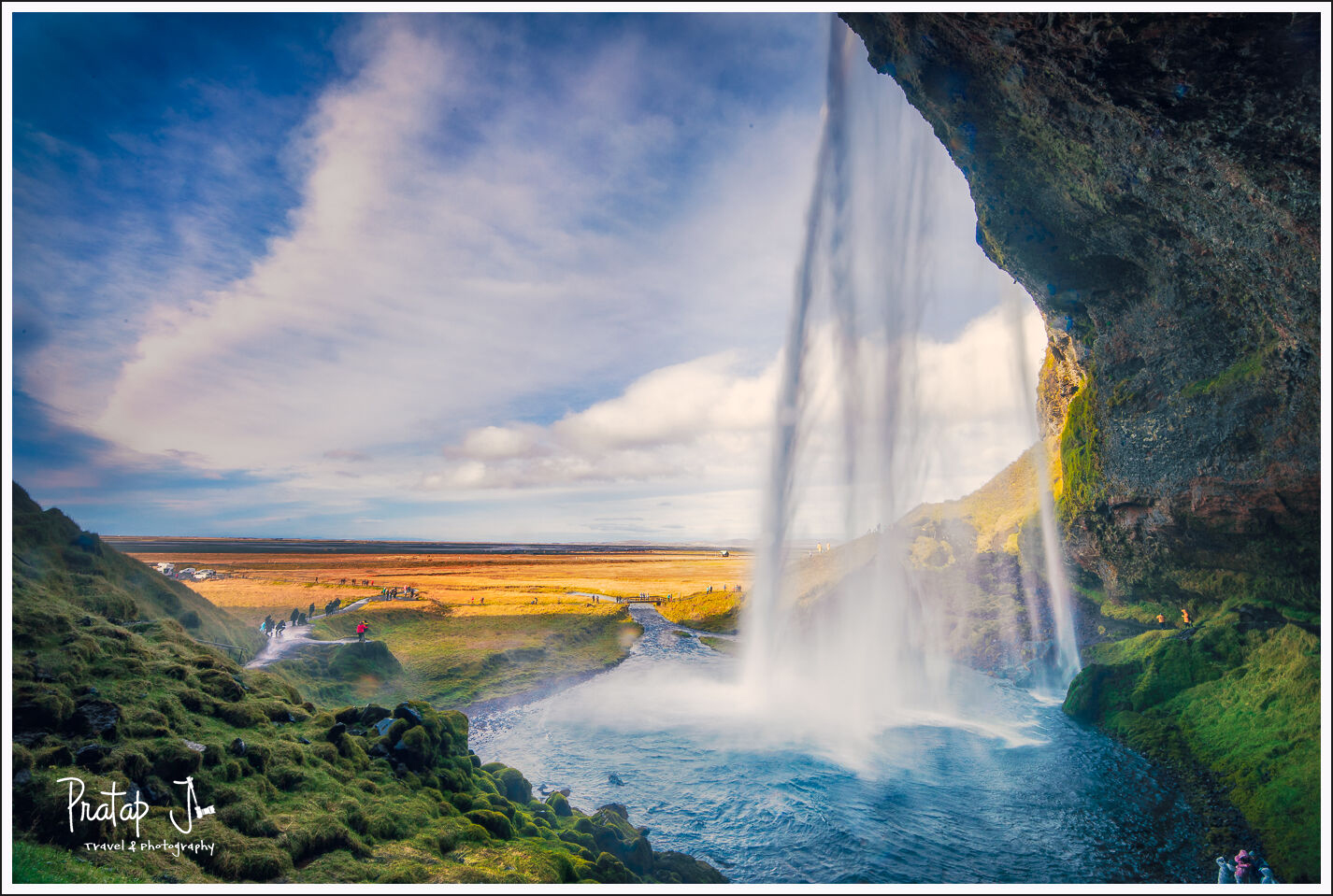
Skógafoss is a very popular waterfall because it is very ‘classical’ looking. Tons of water falling down in a narrow, straight line. Legend has it that a chest of riches is hidden beneath this waterfall. Almost every waterfall has a mythical story behind it. And thanks to Thor, our driver-cum-guide, we heard most of them.
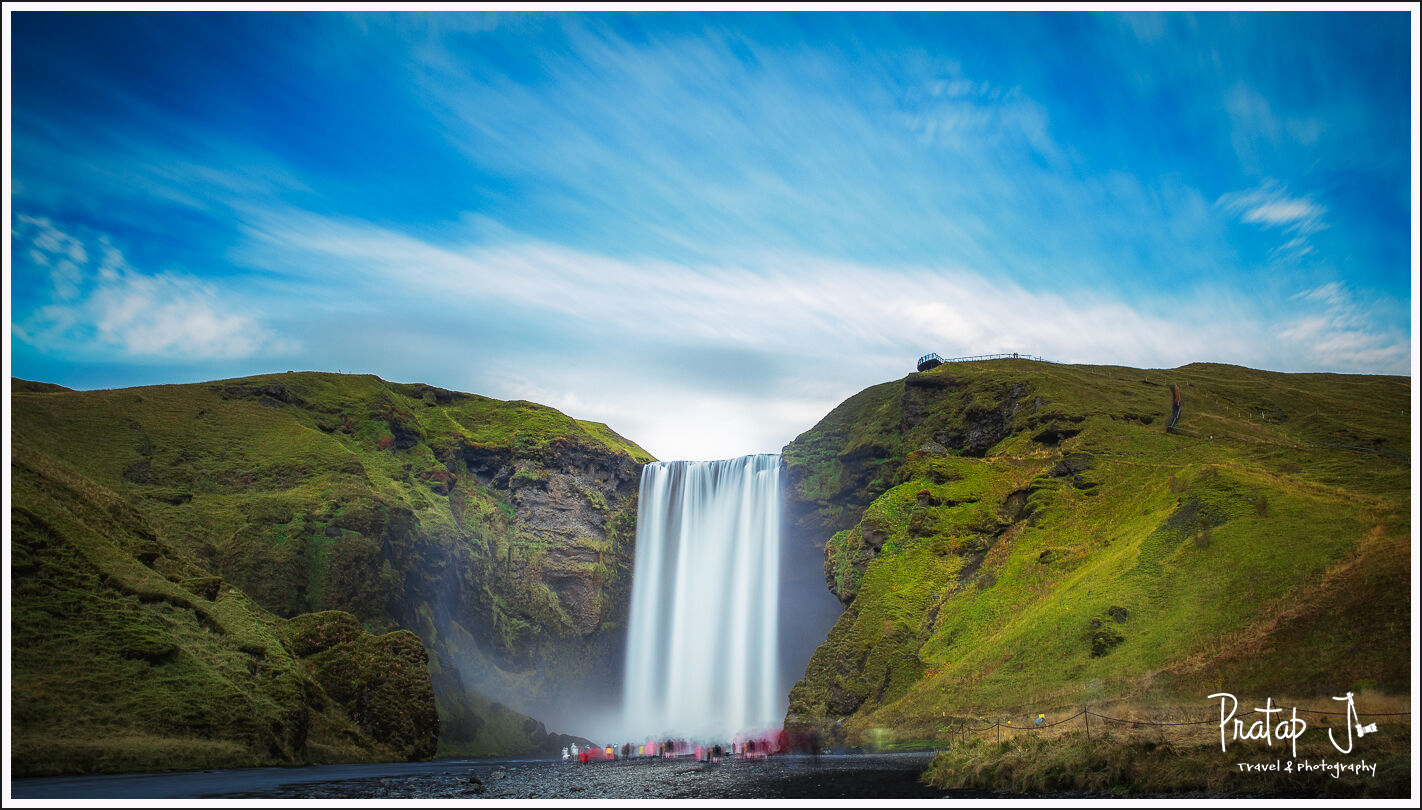
Reynisfjara beach has black sand, which is actually broken pieces of lava. From the beach, you can see free standing sea stacks called Reynisdrangar. They make for an interesting composition if you are into long exposure photography. There are also tall basaltic columns and a cave carved out from the basaltic mountain. Each of these strange rock formations have stories of trolls and giants associated with them. They certainly do look quite bizarre.
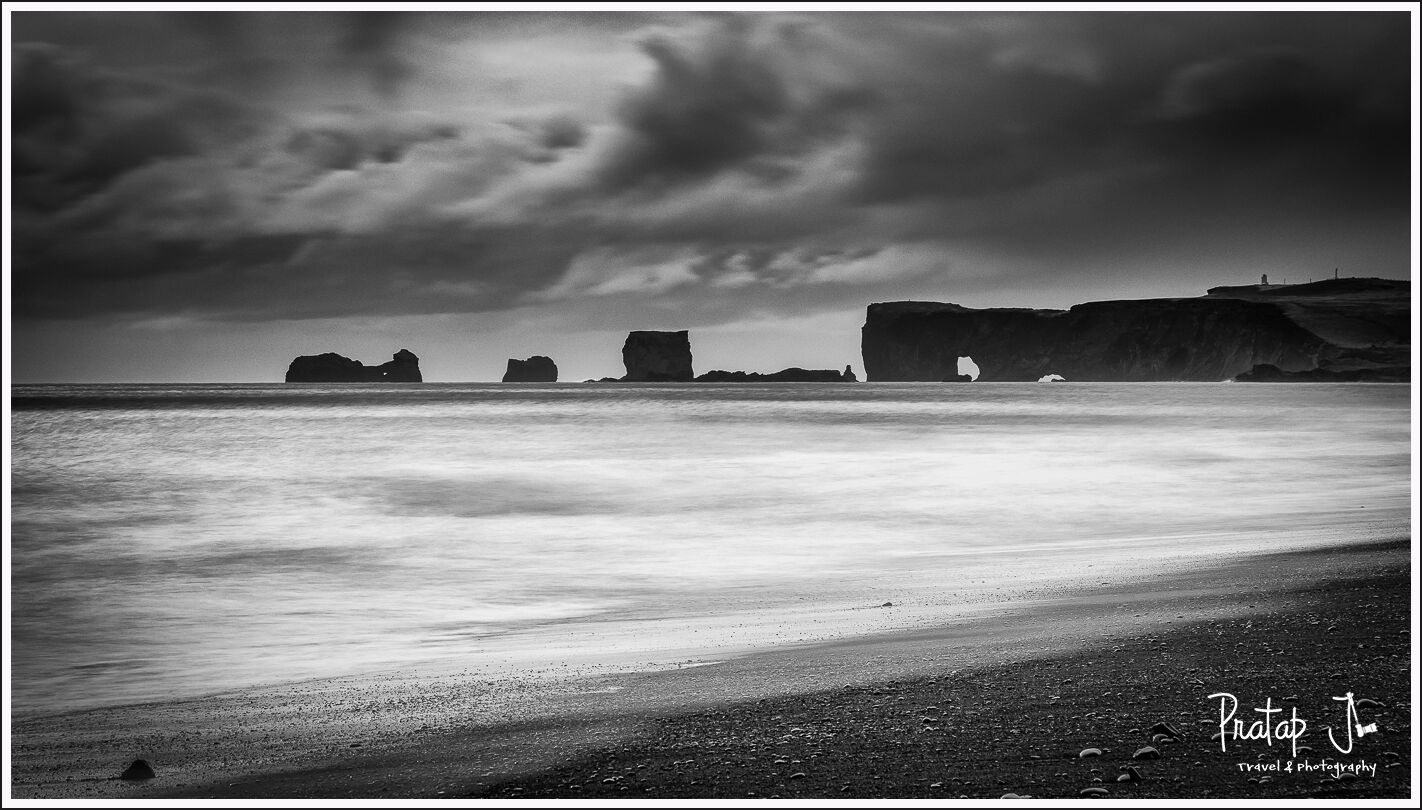

Other interested spots on the Golden Circle circuit are the Geysir and Þingvellir. There is a long history about how Þingvellir was where the world oldest democratic parliament was held. It was fun hearing this story from Thor. The ancient Icelanders seemed to be noble folk who made and lived by community rules.

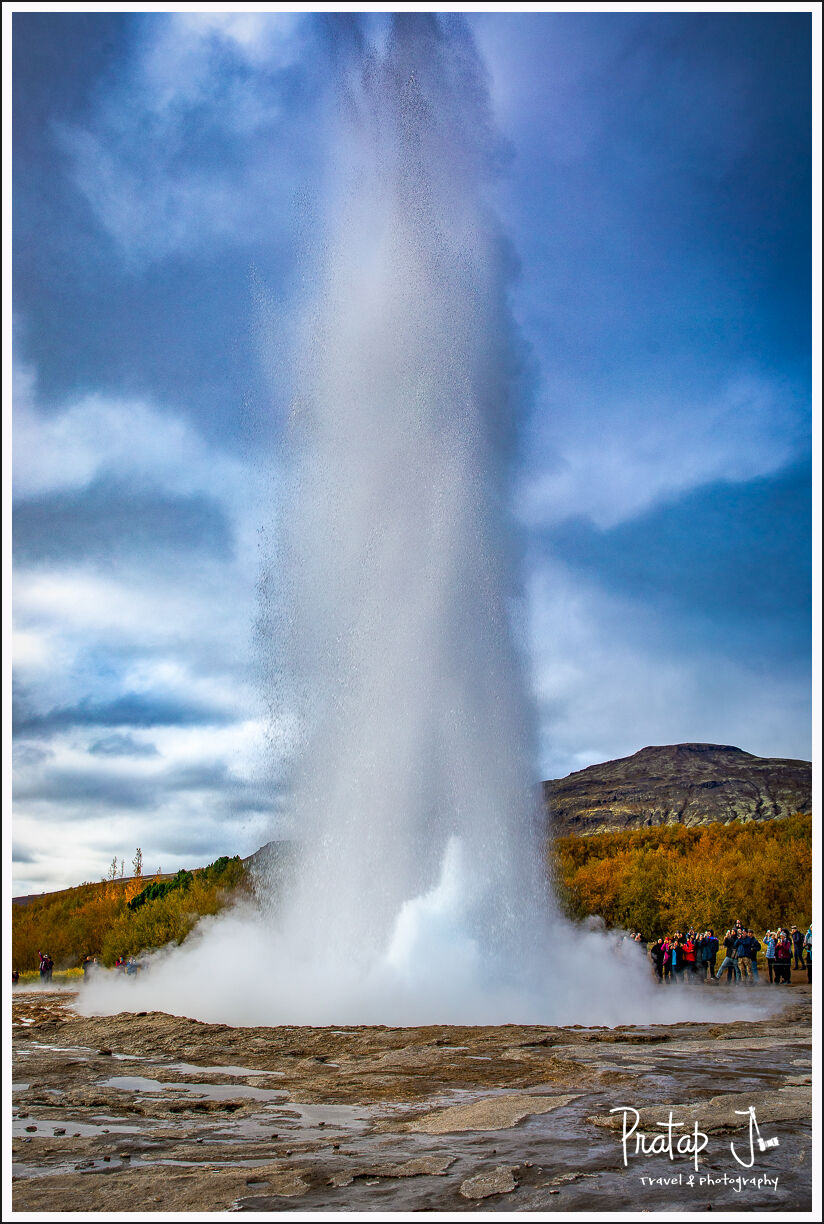
The tourist spots on the Golden Circle, especially the waterfalls such as Gullfoss, Seljalandsfoss, Skógafoss and Reynisfjara were all far too crowded for my liking. To do some serious photography, I recommend spending two days on the Golden Circle route.
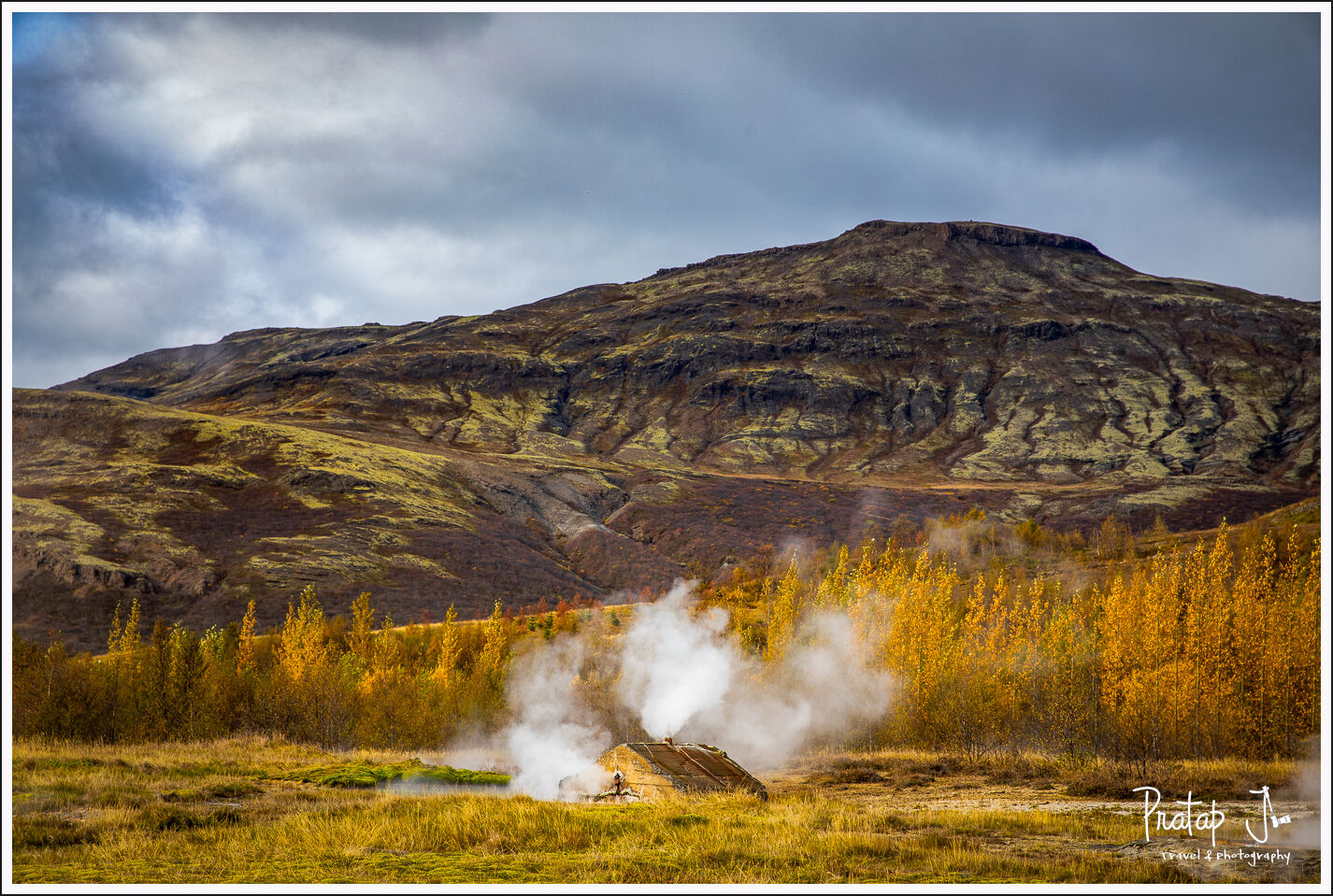
Closest town: Vik
Day 2: Vatnajökull National Park and Jökulsarlón Glacier Lagoon
We left our hotel at Vik after breakfast the next morning. It had rained all night and there was absolutely no opportunity to see the most magical show in Iceland – the Northern Lights. I kept a close watch on the weather forecast for the next few days, hoping for the best.
As we drove towards our main destination for the day, we passed by the Eldhraun lava field. Here, moss grows over solidified lava, giving the landscape an otherworldly feel. By day two, I had understood that the best place to record the beauty of Iceland, is in the mind. Because you can only stop your vehicles at designated spots, many beautiful sights are best witnessed from inside the cabin. This is another reason to not be in the driver’s seat!
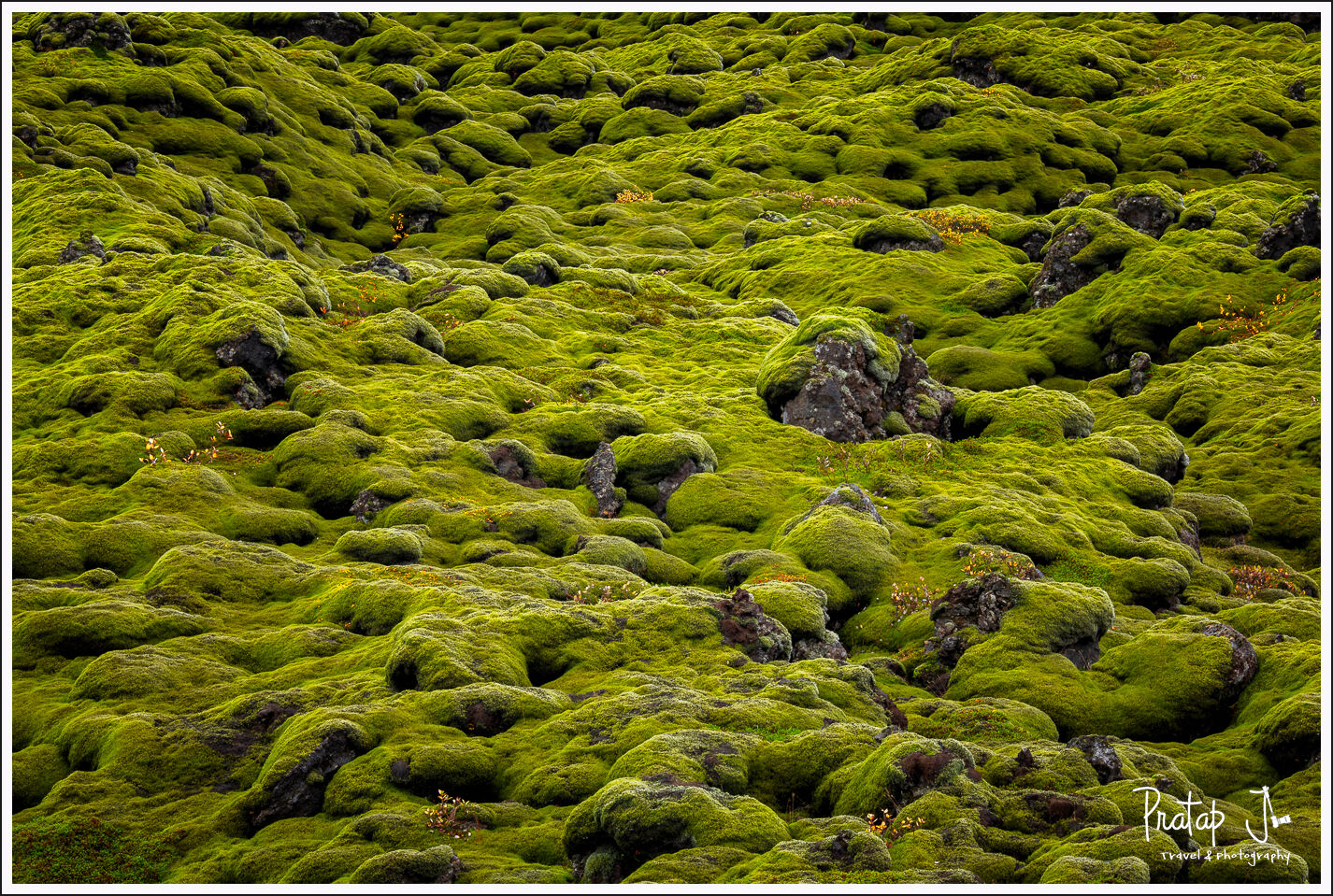 Vatnajökull National Park is Europe’s largest ice cap, and where we were headed on day two of the ring road tour. This ice cap has several glacial outlets, and some of them are easily seen from the ring road. The land between the glacial outlets and the ocean, reveals the aftermath of a massive flood. It happened in the recent past, when a volcano melted the glacier. A lot of places of interest in the east of Iceland have to do with the Vatnajökull glacier.
Vatnajökull National Park is Europe’s largest ice cap, and where we were headed on day two of the ring road tour. This ice cap has several glacial outlets, and some of them are easily seen from the ring road. The land between the glacial outlets and the ocean, reveals the aftermath of a massive flood. It happened in the recent past, when a volcano melted the glacier. A lot of places of interest in the east of Iceland have to do with the Vatnajökull glacier.
We were going to the national park to walk on a glacial outlet. This activity requires the services of a professional guide, good ankle length boots, and crampons. These can be rented at the information center. We were a large group, and we boarded a different bus which took us close to the glacier outlet. Then, after a 45 minute walk with our guide, we were on top of the glacial outlet!
Once on the glacier, our Spanish guide, Marcus, gave us interesting tidbits about the massive sheet of ice we were standing on. He kept us engaged for about 45 minutes with his funny talk. There is not much photography you can do on the glacier, and I wouldn’t recommend taking heavy gear on the walk.
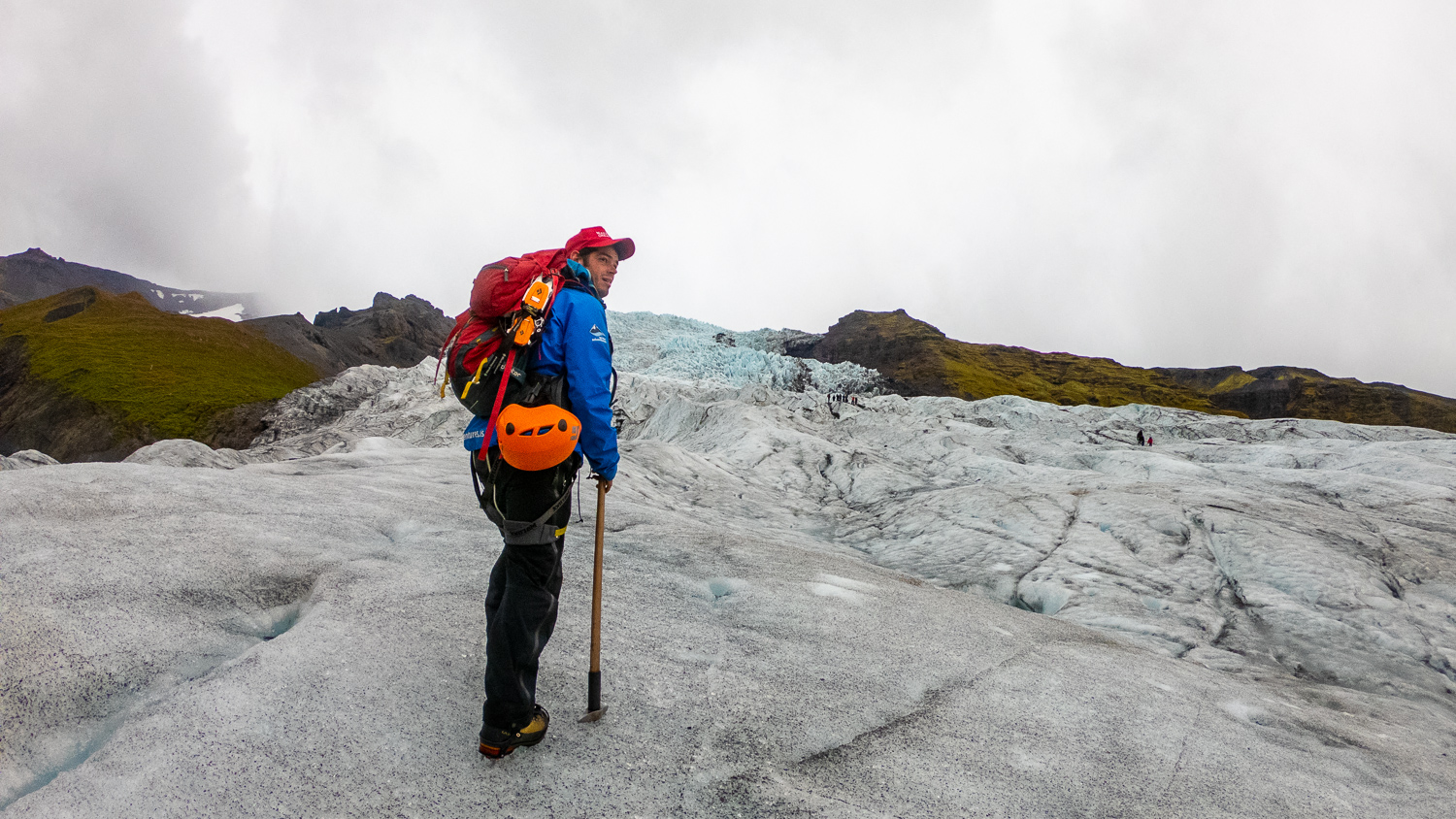
After the glacier walk, we drove to an area which is unique to Iceland. The Jökulsarlón Glacier Lagoon is where large icebergs float towards the ocean. If you are lucky, you can spot seals that visit the lagoon in winter, to fish. The Jökulsarlón Glacier Lagoon was formed in 1935 due to the rise in global temperatures.
When the icebergs reach the ocean, they break off into smaller chunks. At the Diamond Beach, close to the Jökulsarlón Glacier Lagoon, you can see the waves from the arctic ocean crash against these blue ice pieces which comes in all shapes and sizes. They are strewn all over the black sand. Truly a sight to behold!
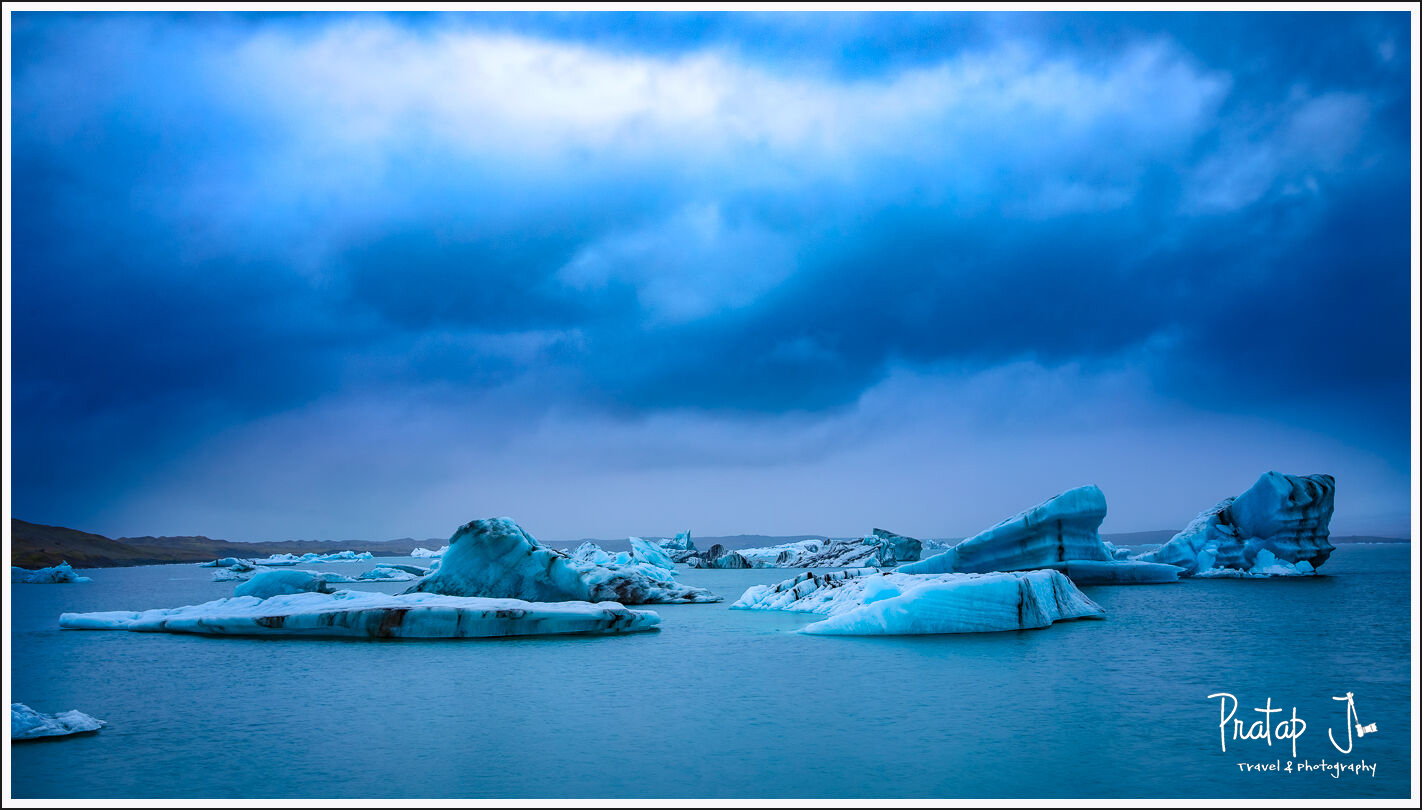
Because of the waves, the chunks of ice are constantly moving. So, no two photos from the Diamond Beach can be the same. Careful not to get wet when standing close to the water, as the waves can rise very high after crashing into the ice!
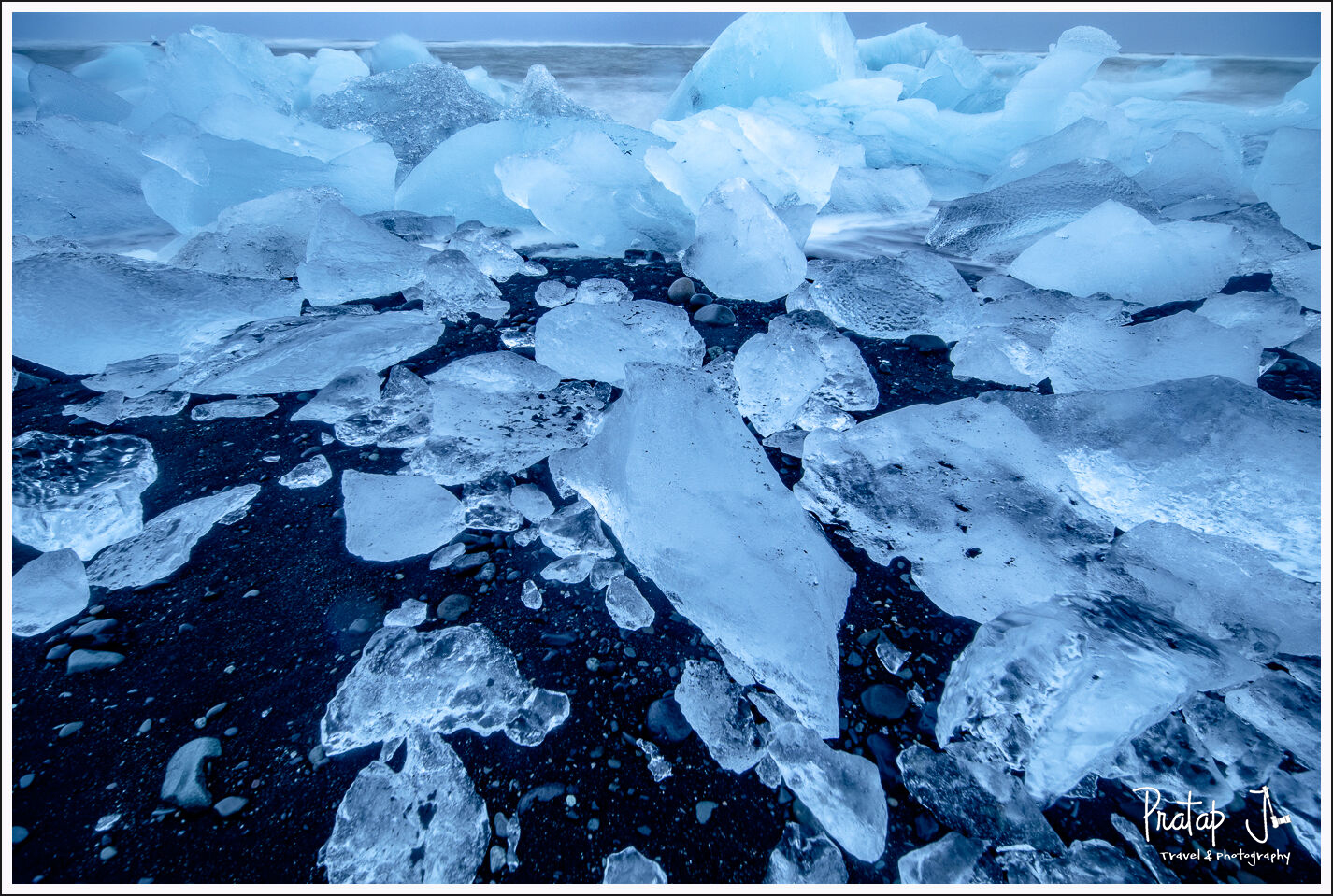
Closest town: Höfn which is 80 km away.
Day 3: East Fjords
A fjord (or fiord) is a long, narrow deep inlet of the sea bordered by steep cliffs. Fjords commonly extend far inland and are extremely deep in their upper and middle reaches. – Britanica.com
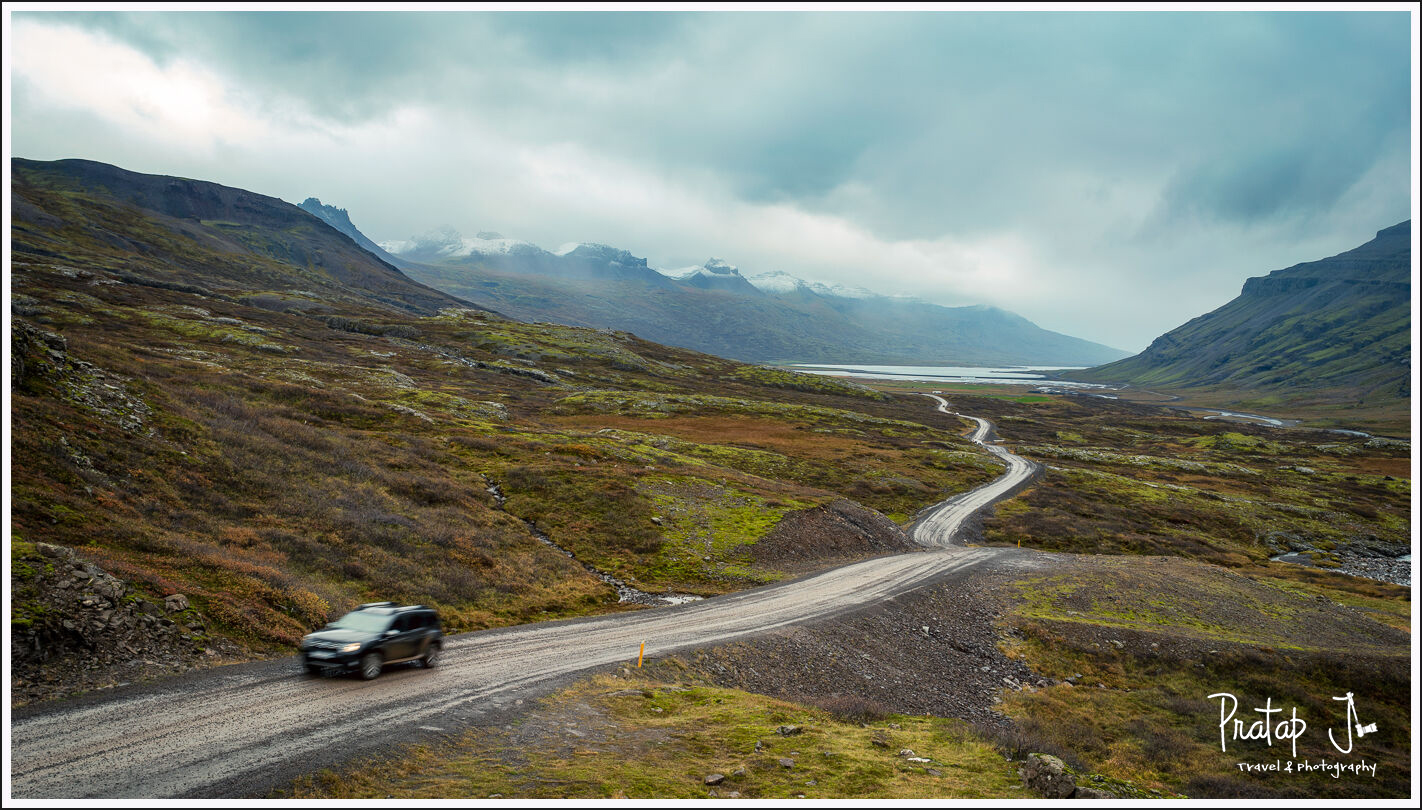
The experience of driving beside a fjord is something which is hard to describe in words. The closest example I can give, is that of wide, cinematic shots which show a small car moving on a long winding road, flanked by ocean on one side and step rock faces on the other. These rock-faces stretched for miles together, and were a constant companion on this route. We were sometimes driving along the coast, sometimes meandering through valleys, and sometimes through tunnels. The waters that flow beside the massive fjords are generally calm. The East Fjords have some of the most scenic roads in Iceland.
Our destination today was a waterfall called Hengifoss. Leaving the fjords behind, we crossed a high mountain pass where we spotted reindeer from a distance. Although the mountain roads were bad in patches, drive through them was a cakewalk compared to our everyday commute in Bangalore. Soon, we were in the East of Iceland.
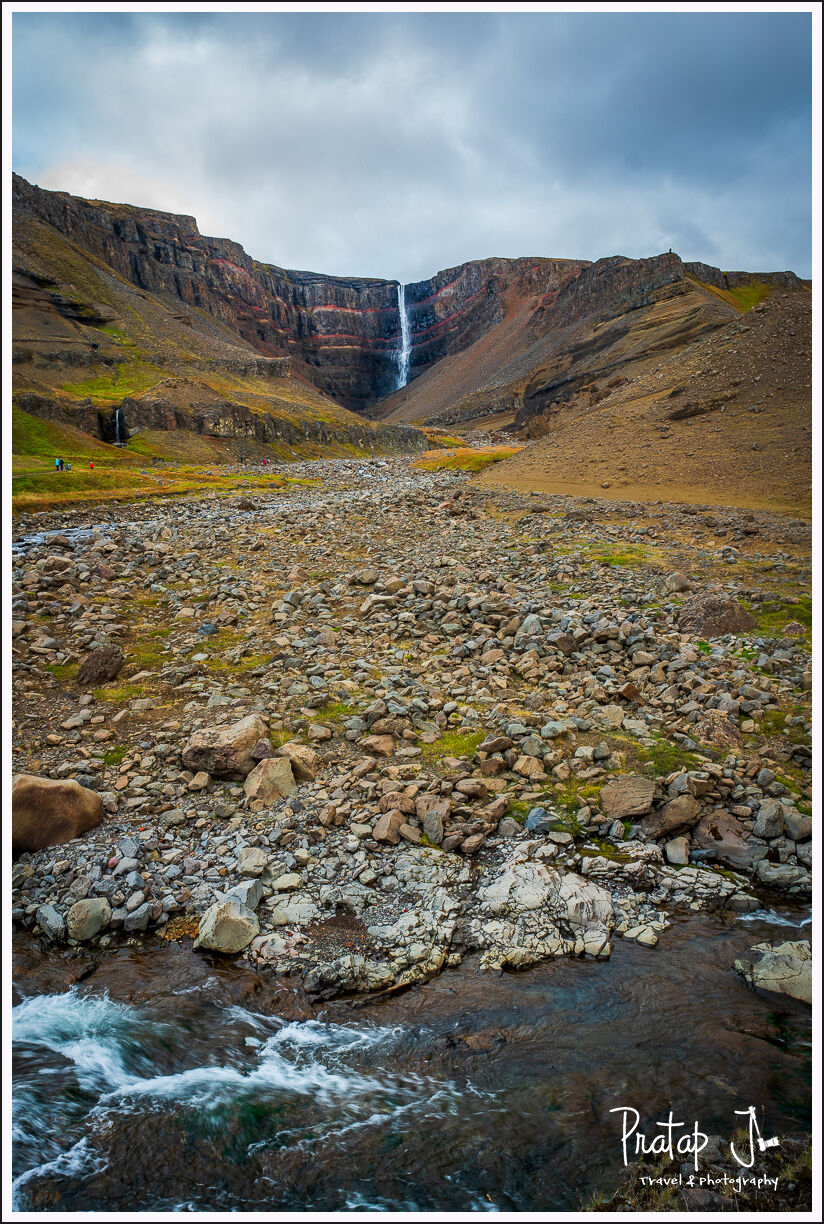
It was a three hour hike up, to reach Hengifoss. On the way, we came across a smaller waterfalls called Litlanesfoss. Hengifoss was visible at a distance. You can see Hengifoss from a distance, so if you do not want to go close to the water, you can shorten your trek. The countryside views are fantastic as you climb higher. The water from Hengifoss flows as a narrow stream down the stark mountainside, and then joins a much larger river in the plains below. I spotted sheep grazing in the wide riverbed, and witnessed a dramatic sunset as I climbed to Hengifoss.
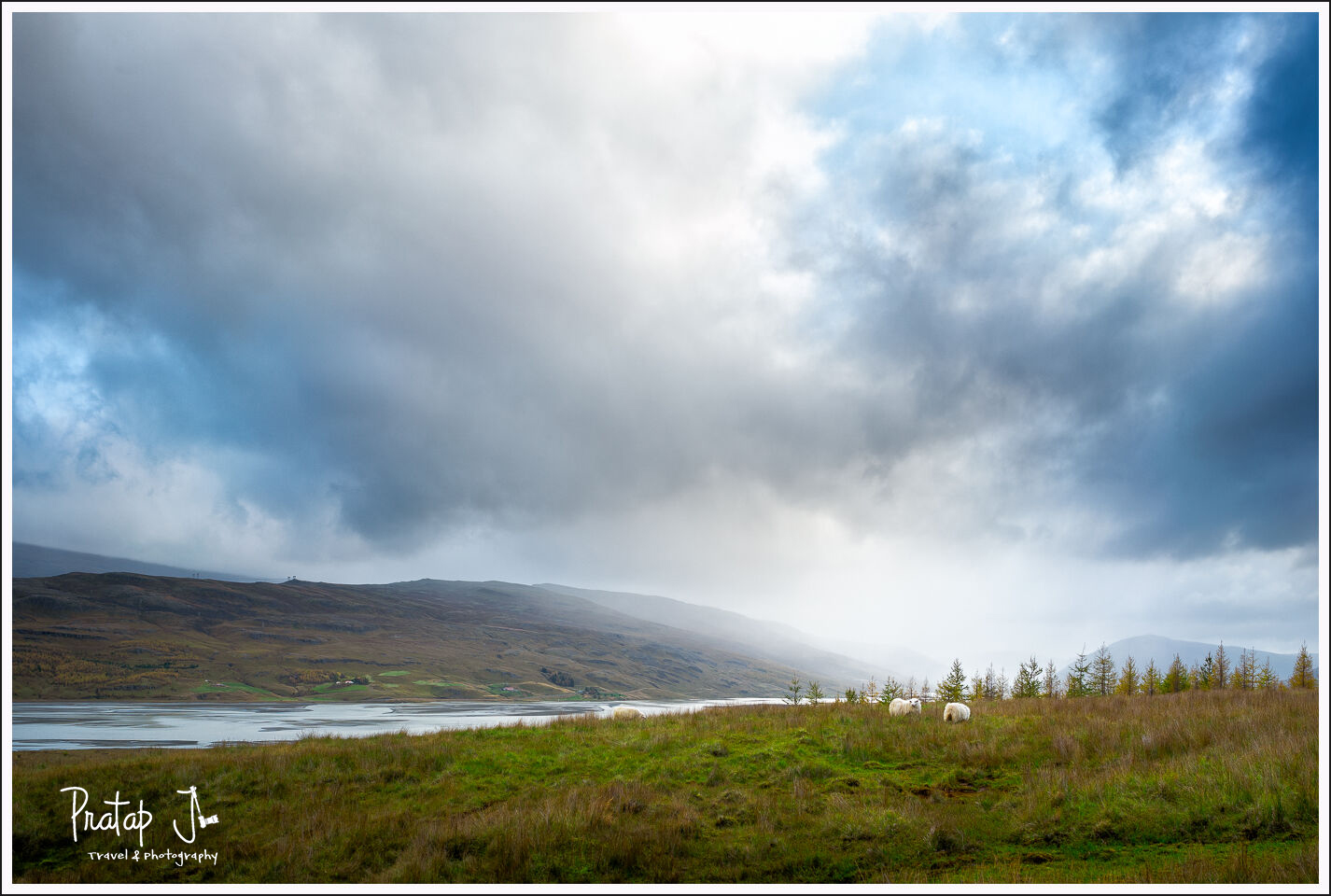
Day 4: Dettifoss and Godafoss
Dettifoss is Europe’s fiercest waterfall. The river that flows at Dettifoss originates from the Vatnajökull glacier. It flows through a stony, desert like landscape. From our hotel, the drive to Dettifoss was through a region that closely resembled Ladakh. The winds at Detifoss were very strong. So strong that there is a minimum weight requirement to visit Dettifoss. OK, kidding :).
There are two approaches to Dettifoss. We went to the West bank from where we could see the waterfalls from up close, and feel the spray of water. The massive amounts of water flowing down the river is best experienced from the West bank as you can see the full with of the river. But I was told that from the East bank, you can see the height of the waterfalls better. Another waterfall in this area, which we did not visit, is Selfoss. Dettifoss is also where the toilets in Iceland were the smelliest. But hey, they actually cared to install portable toilets in a place with such strong winds!

From Dettifoss, we drove towards Godafoss – the waterfalls of the Gods. We first stopped at a Sulphur mud bath in Hverir and then at the Myvatn hot springs. At Hverir, hot sulphur heats up the earth’s surface, and you can see black mud boiling over. The region is void of vegetation. Coupled with boiling mud, Hverir does not feel like it is part of planet earth.
The glacial waters at Godafoss were in a really pretty shade of blue. In my eyes (and my camera) this was more beautiful than Dettifoss. I mentally made a note to include Godafoss in the list of places to visit in winter. At Godafoss, you can get creative with your compositions. You can photograph the waterfalls from a distance, go close to where the water tumbles down, or go to the river banks. IMO, a lot of other waterfalls in Iceland have very limited creative prospects when it comes to photography.
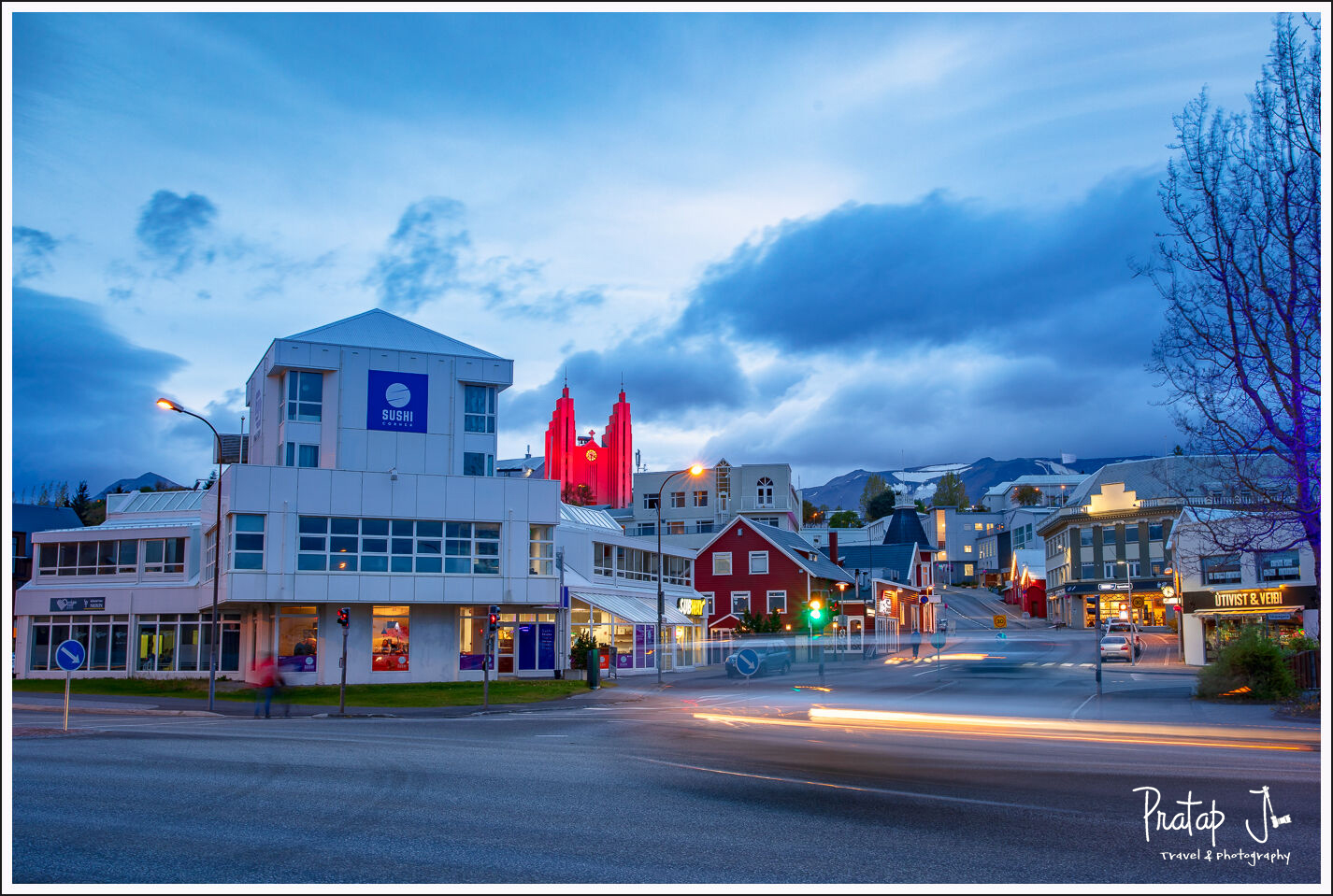
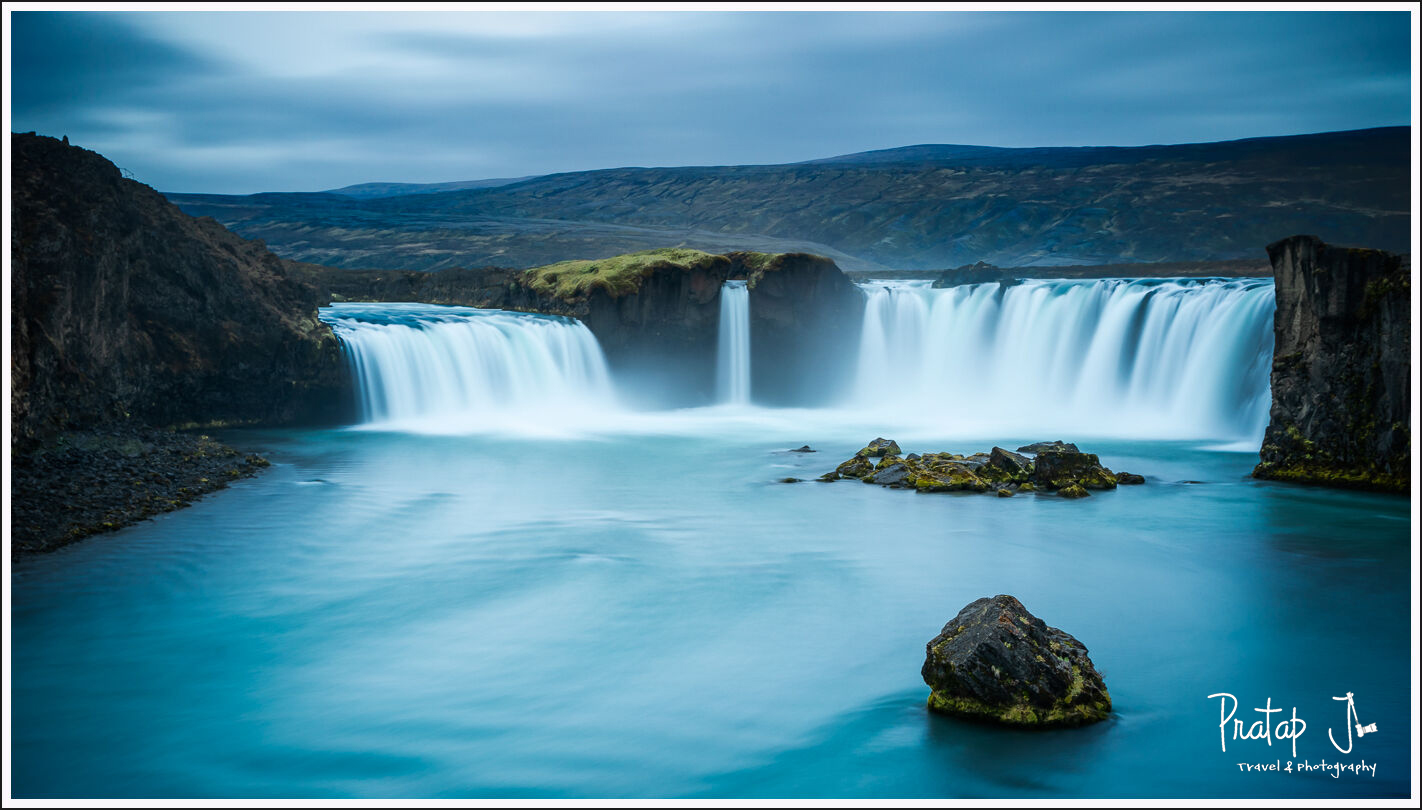
From Godafoss we drove to the northern capital of Iceland, Akureyri. This is the second largest city in the country, and very laid back compared to Reykjavik. The old part of the city has some really nice colorful houses. Icelanders love to paint their houses in very bright red and yellow colours. These bright, cheerful colours help in lifting the mood during the harsh winter months. This is when the nights are longer than the days. Akureyri has an international airport and the airstrip extends into the ocean. We shopped for a bit, and hung around in the central part of town, until the sun set.
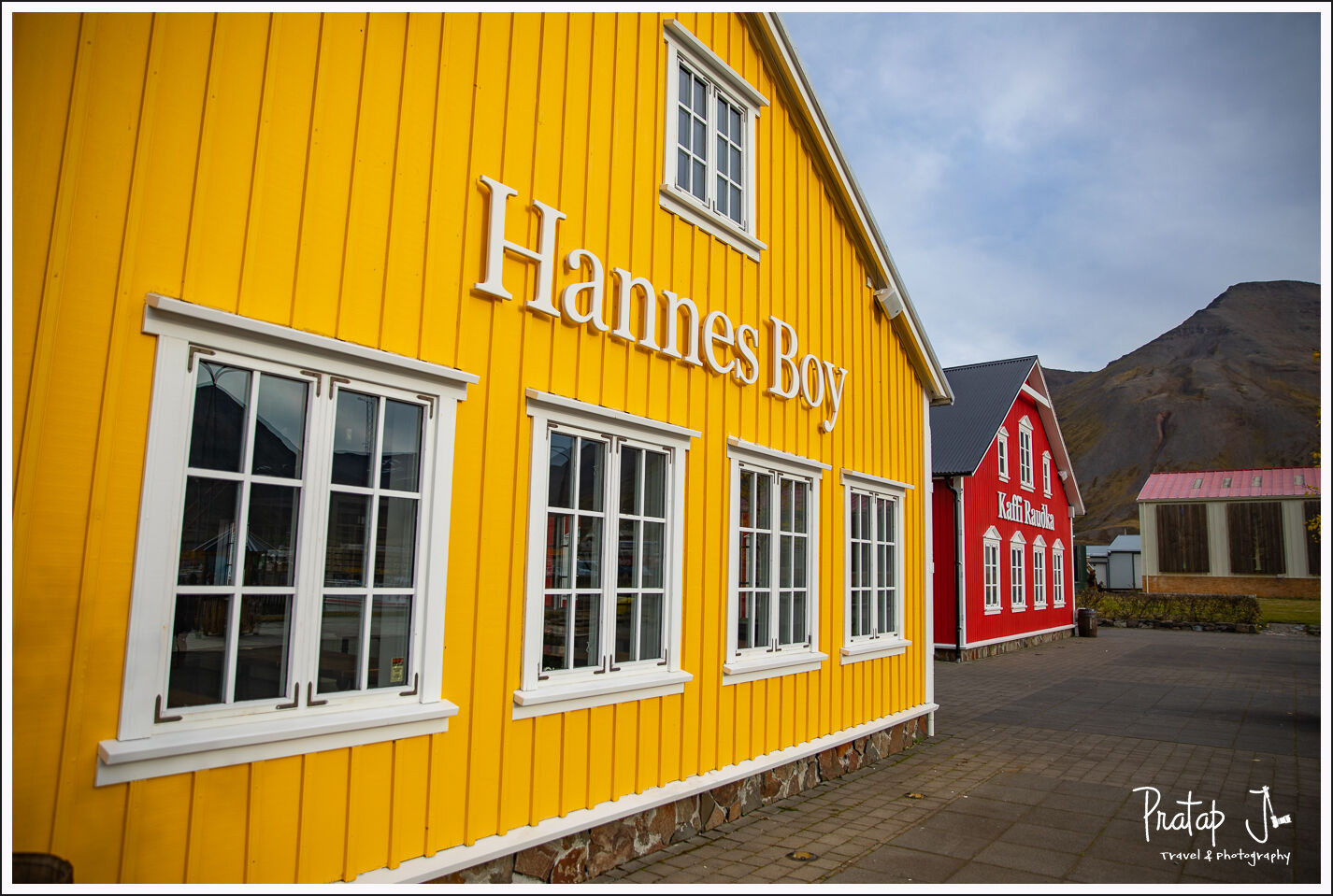 Day 5: Whale Watching in North Iceland
Day 5: Whale Watching in North Iceland
Whale watching is an experiential activity which you can enjoy only in a few parts of the world. Akureyri is just 50 km from the arctic circle, and the whale watching tours are organized from the nearby port of Dalvík. We slipped into bright red overalls at the whale watching office. About 30 of us set off on a large boat into the Arctic ocean. We took nearly half an hour to cross the waters of the fjord. At the mouth of the river, our captain switched off the engine to look for the humpback whales. If you are lucky, you can also spot porpoises.
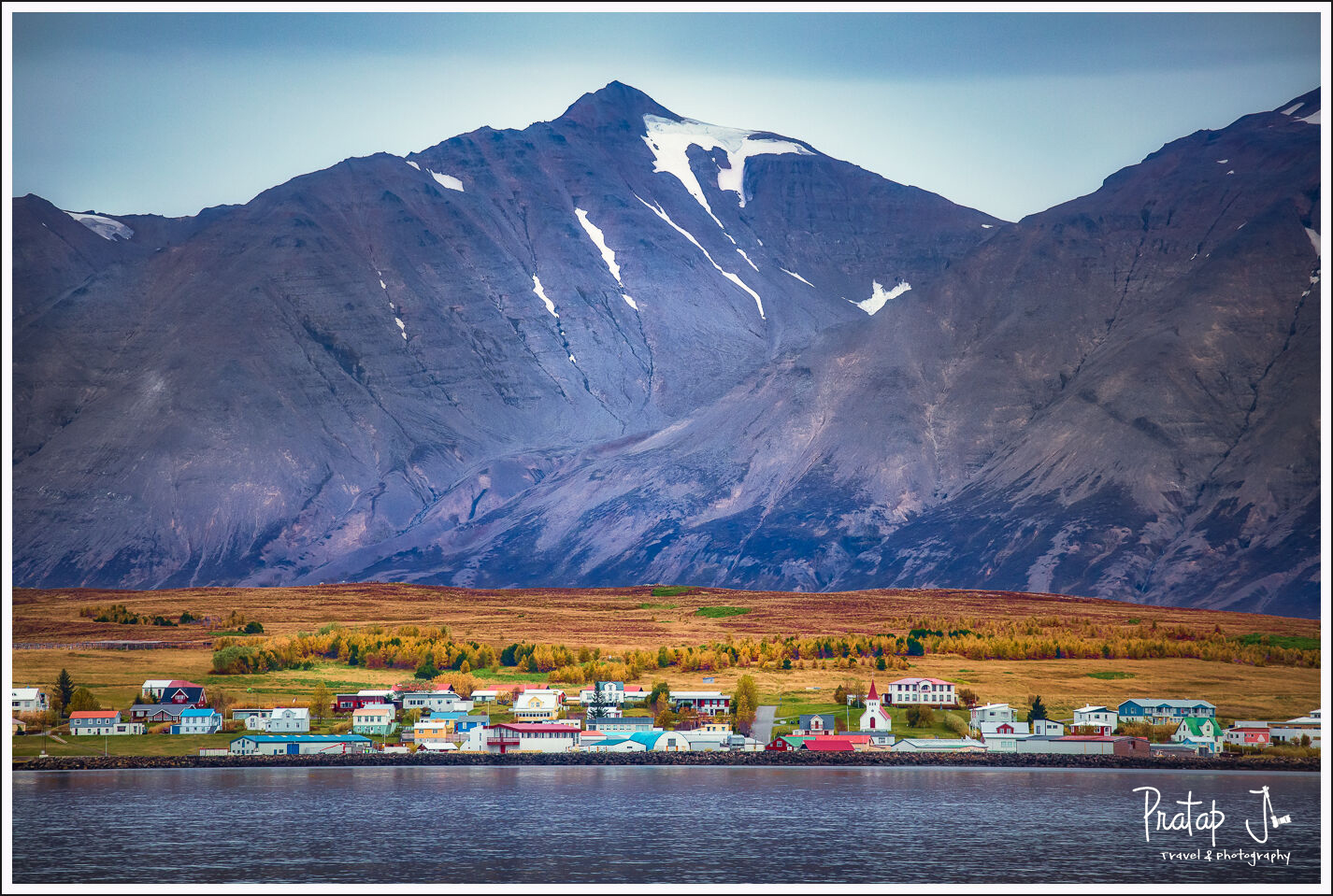
Humpback whales are huge, and the adults can get as big as 50 feet. Their average lifespan is similar to that of a human being. It is amazing when you think about how they live in the ocean for so many years without the internet. Maybe that is why they sing to one another and leap from the water frequently. We didn’t hear their songs, but we did notice that they swam around a lot. You know there is a humpback whale near the surface of the ocean when you see a sprout of water come up like a geyser. One moment they are next to you, and the next moment they disappear, only to resurface at a distance. Whale sighting is yet another activity in Iceland which entirely depends on your equation with Murphy.
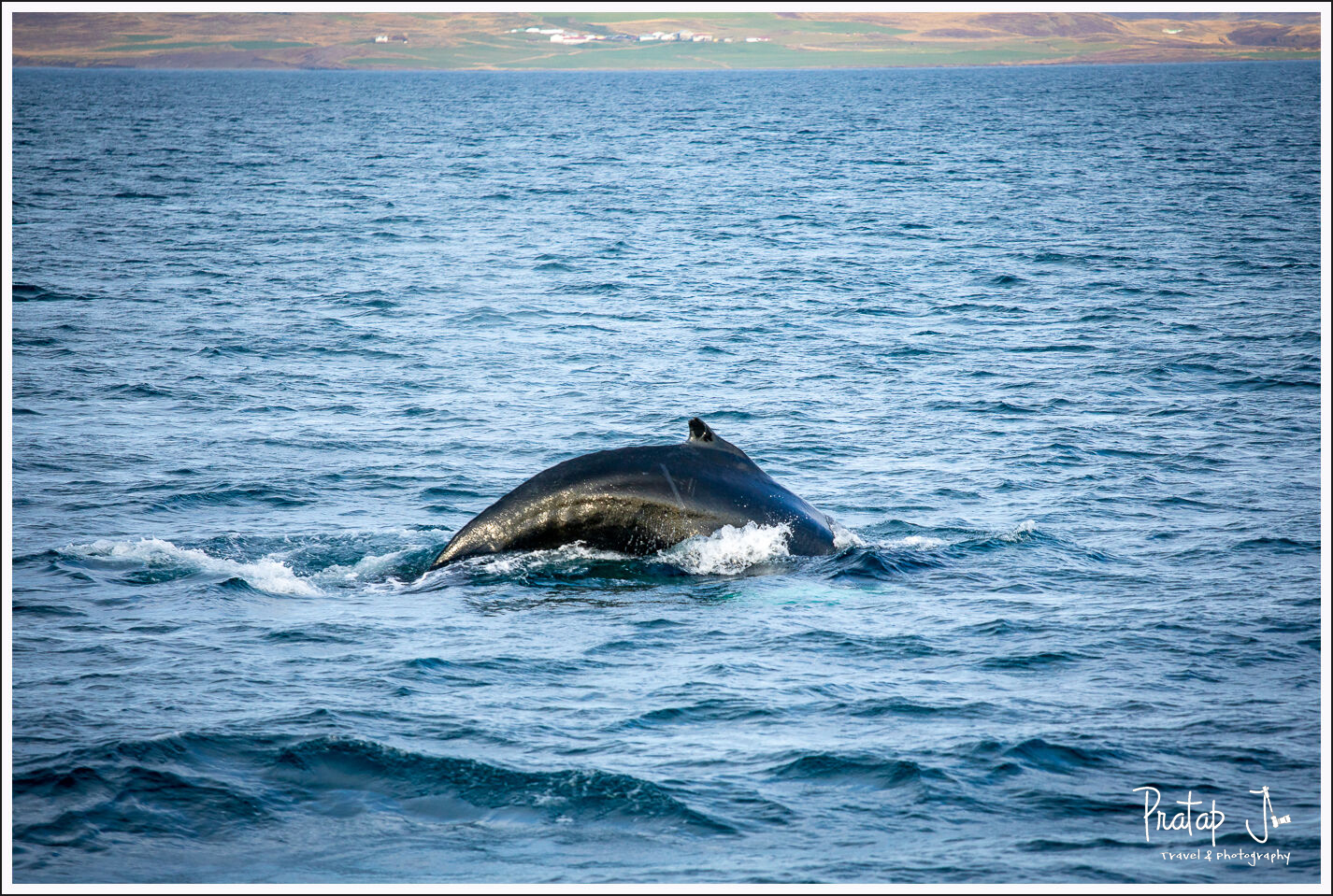
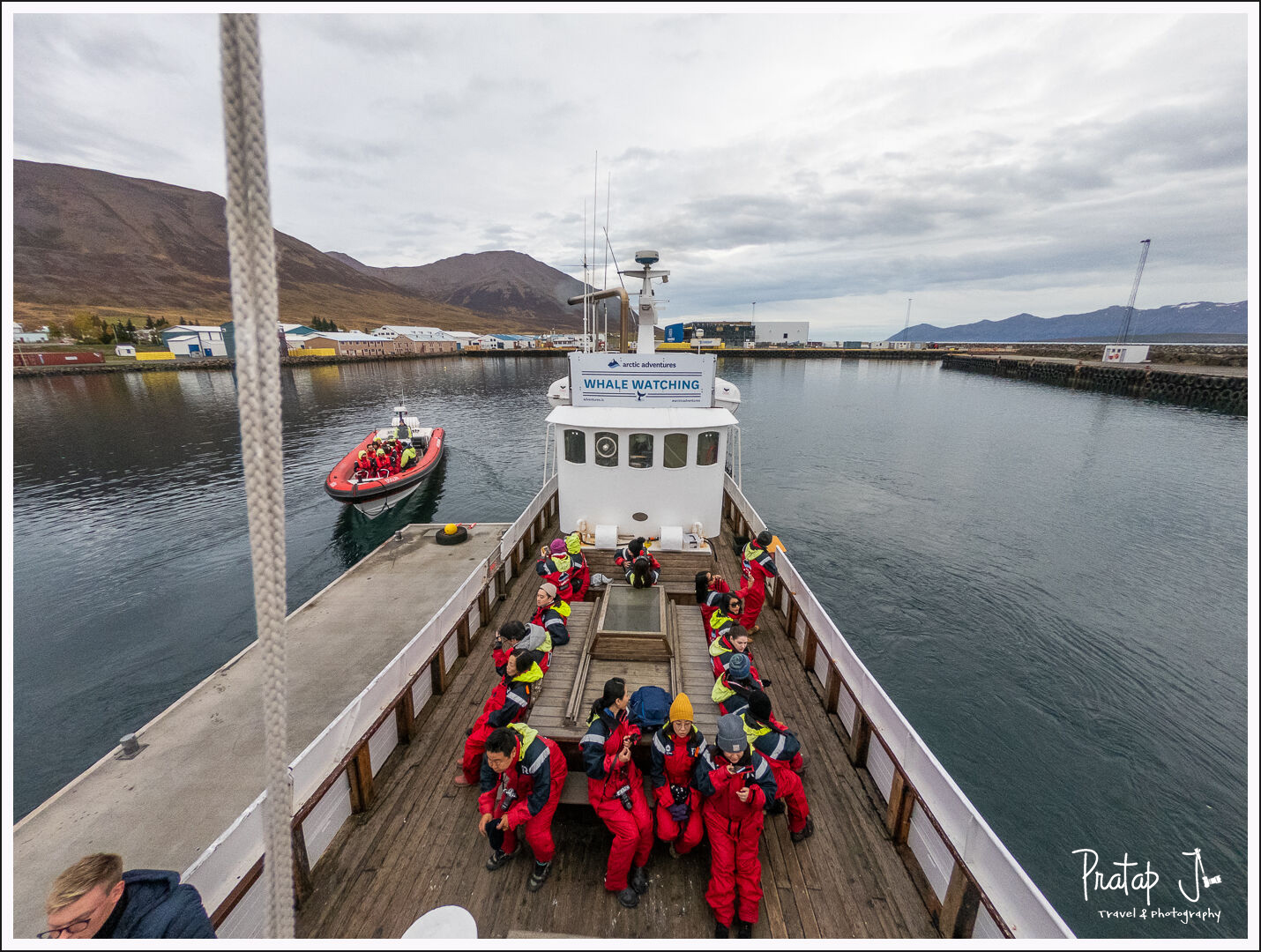 Tip: Upgrade to a Rigid-hulled inflatable (RIB) boat to see the whales up close. Before visiting Iceland, some uninformed person on the internet opined that these loud, fast moving boats scare away the whales. This wasn’t what I observed when on the whale watching tour. The boatmen followed good etiquette and never scared the whales. The RIB can reach the whales before the bigger boat. Since the whales stay near the surface only for a few minutes, the folks who were on the RIB had a closer sighting of these magnificent creatures. Maybe, they also heard the humpback whales sing!
Tip: Upgrade to a Rigid-hulled inflatable (RIB) boat to see the whales up close. Before visiting Iceland, some uninformed person on the internet opined that these loud, fast moving boats scare away the whales. This wasn’t what I observed when on the whale watching tour. The boatmen followed good etiquette and never scared the whales. The RIB can reach the whales before the bigger boat. Since the whales stay near the surface only for a few minutes, the folks who were on the RIB had a closer sighting of these magnificent creatures. Maybe, they also heard the humpback whales sing!
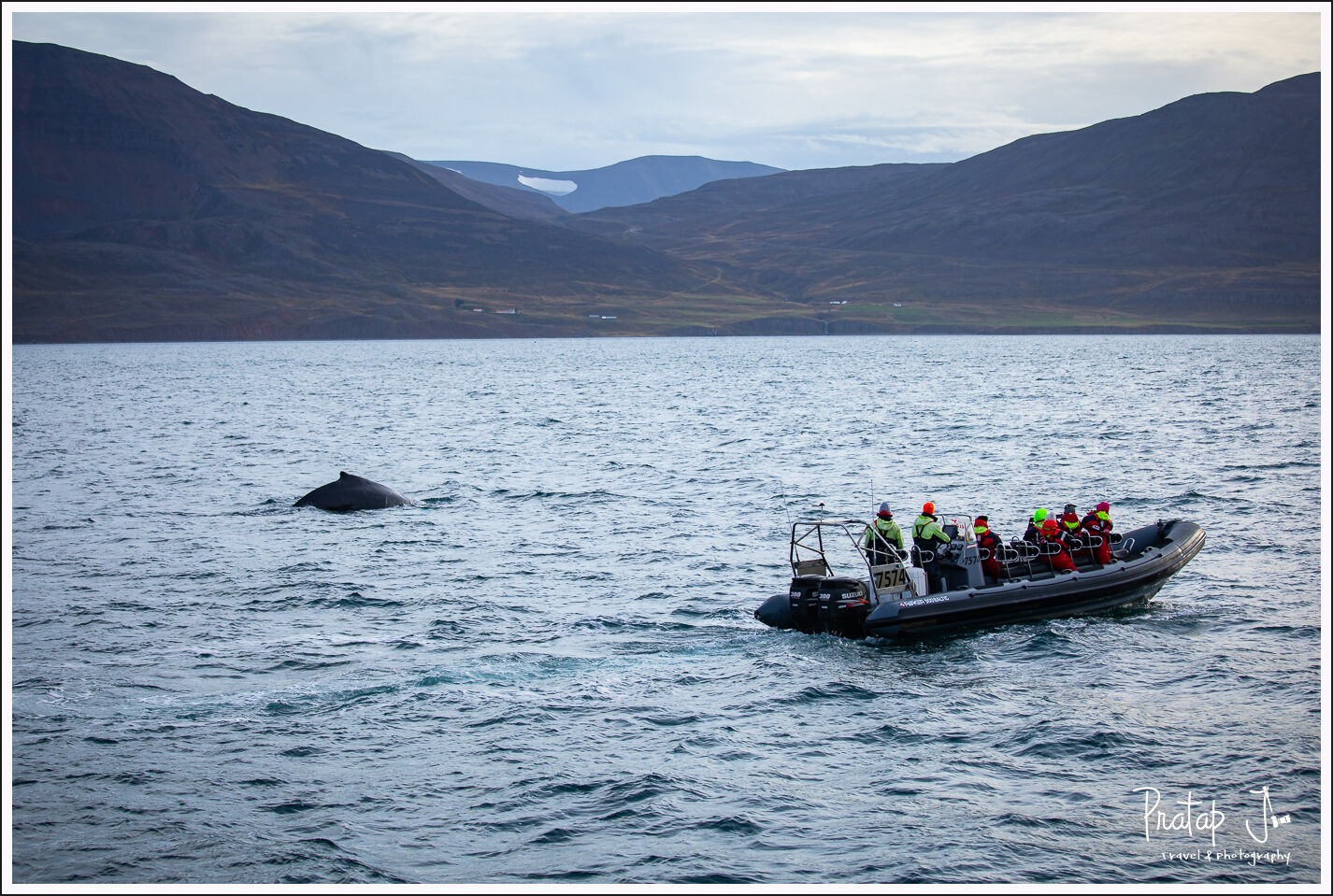
On this day, I finally got to see the Northern Lights for a few hours. The KP Index, which is the measure of how strong the lights are, was low. I will talk about shooting the Northern Lights in part 2 of my blog post.
Day 6: West Coast Road Back to Reykjavik
This was the last day of the ring road tour, and the day which saw me laughing in fits. Let me tell you why.
We stopped at Grábrók, a volcano crater. It was a short climb up the mountain to see the craters, but winds in the region were really, really strong! I weigh all of 90 kilos and the winds were pushing me off the mountain. In some places, it was just safer to sit down on the stairs, than fight the winds and continue walking. This had me, and the others literally rolling (for more reasons than one) on the floor laughing. I don’t remember seeing much of the craters but I will never forget how the winds nearly pushed me down the mountain. It was extremely dangerous, but funny!
Our next stop was Deildartunguhver, the highest-flow hot spring in Europe. Here, hot water bubbles from under the ground with great vigour. Icelanders were the first to harness the power of steam from geothermal water. Most houses in Iceland are heated naturally from the steam produced by hot water springs.
From there, we visited a horse farm. A kind Icelandic lady has opened up her horse farm to tourists. This farm has bred many award-winning horses. We were shown a video about how the Icelandic horses are the most unique in the world. They have seven gaits, while horses from other parts of the world have five. We clicked a lot of photos with these friendly animals. Horse riding is permitted, but there is a fee. This farm also had adorable dogs, puppies and cats. I could have lived there forever! I was glad to have this opportunity to interact with a local, and visit an Icelandic farm. I would have certainly missed this experience if I had done a self-drive.

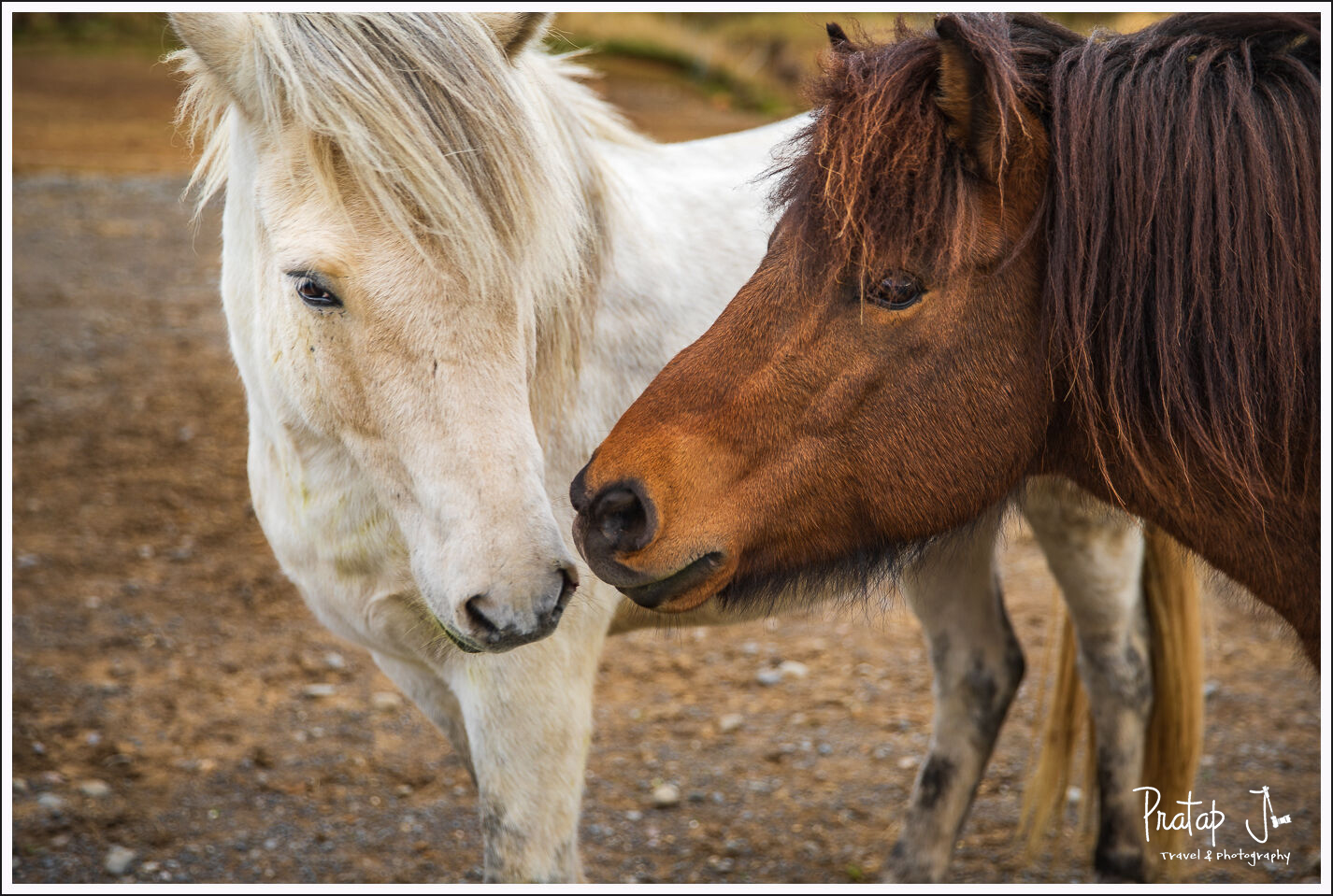
We stopped for lunch at Barnafoss, or Children’s Falls. As a kid, I lived near a Children’s Park, so I had imagined this place to have a playground. But the real story behind Barnafoss was more tragic. As with most Icelandic stories, it was from the past, and recorded how the kids of a local farmer fell into the river and died. Hence the name, Children’s Falls.
Although I could not see or photograph Barnafoss, due to lack of time, I did not miss the more photogenic Hraunfossar nearby. Here, a thousand streams of beautiful crystal blue water cascade down a small rock face. Shrubs and moss of varying shades of orange grow on the rocks, so the interplay of blue with the colorful shrubs is gorgeous.
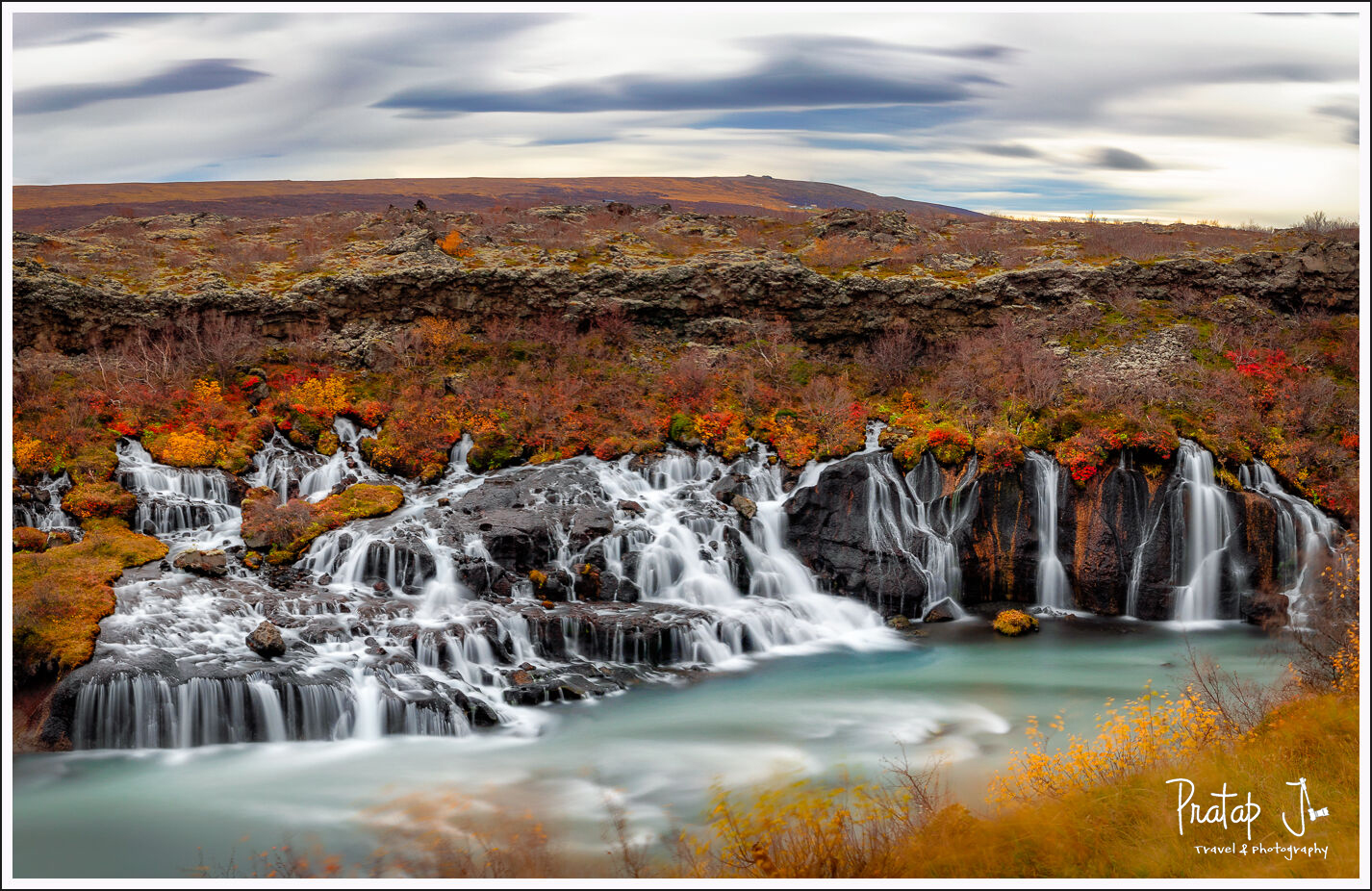
Our ring road trip ended where it started – at Reykjavik. I was certainly thrilled at having seen an entire country in less than a week. But at the same time, I was disappointed at not having a good sighting of the northern lights.
Kirkjufell and Snæfellsjökull National Park
Next on the list, to use up the buffer day before returning to India, was a visit to Hellnar. This town is close to Snæfellsjökull National Park in the West. Snæfellsjökull is a 700,000-year-old glacier-capped volcano and the entrance to the center of the earth – at least as per the novel Journey to the Center of the Earth (1864) by Jules Verner. It is believed that Irish monks lived in this area before the first settlers from Scandinavia came to Iceland.
Hellnar is a very small town by the ocean. A stony cliff called Adam’s Rock is at a walking distance. The much popular Kirkjufell is an hour’s drive. This pointy mountain with a stream nearby is probably the most iconic landmark of Iceland. A large photo of Kirkjufell welcomes you to Iceland at the airport. Kirkjufell means Church Mountain.
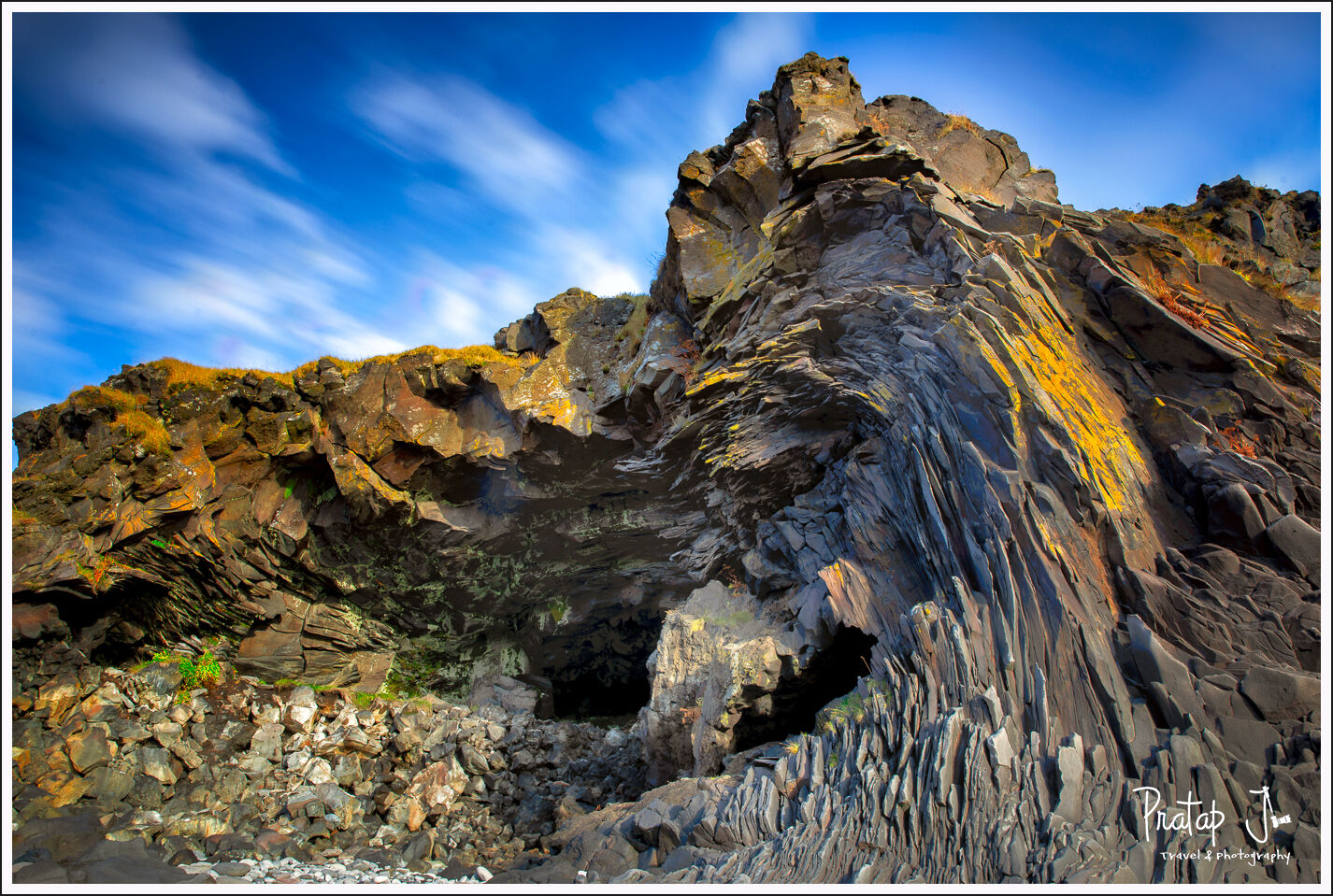
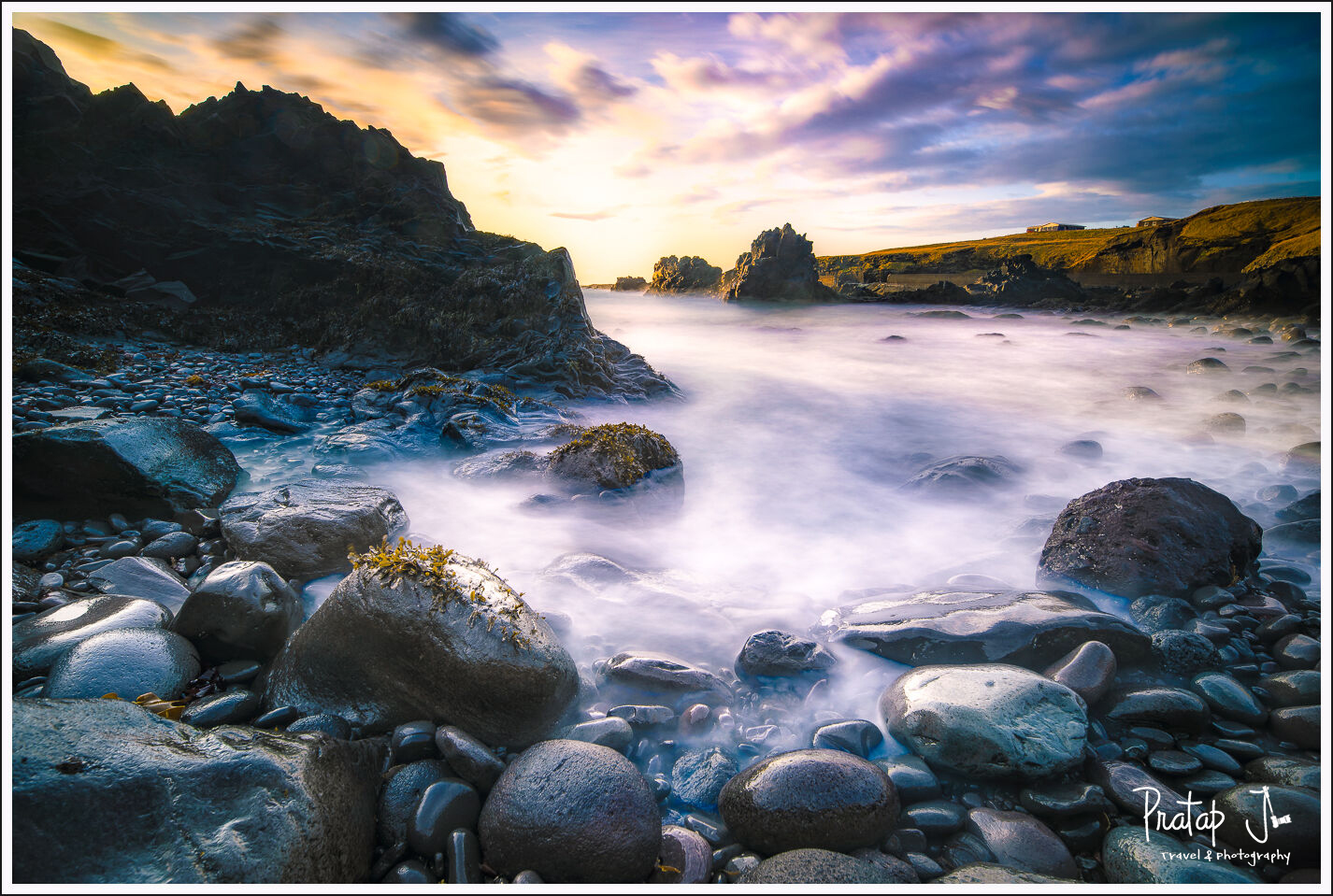
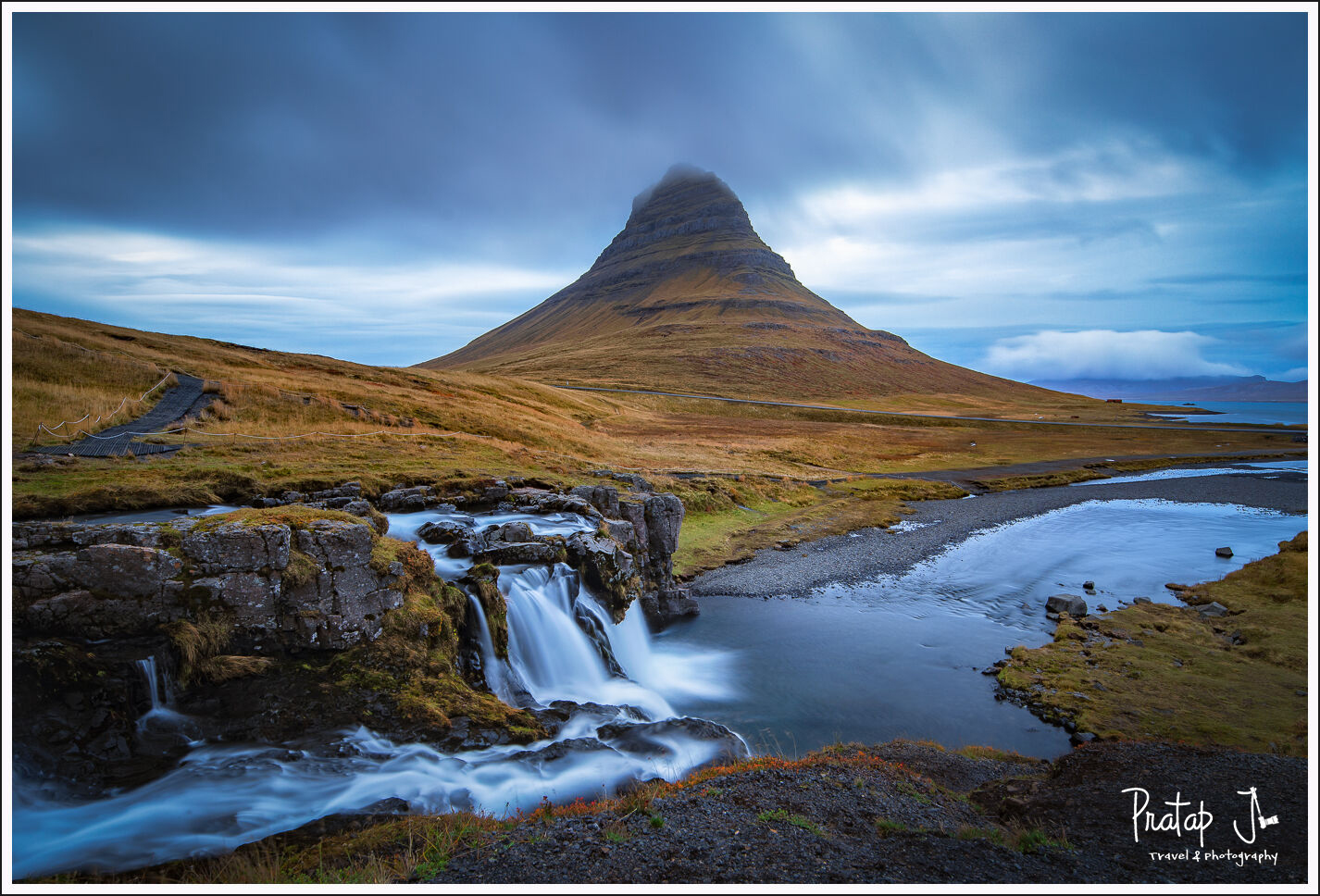
Hellnar was the last chance to see the Northern Lights, and it was my dream to see it at Kirkjufell. Unfortunately the weather was completely overcast and the aurora borealis remained elusive.
Takk fyrir (Good bye) Iceland
Photography, in very simple terms, is all about recording beauty. Beauty they say is in the eye of the beholder, but these days it is mostly in a phone screen. With a smartphone in every hand, it is only natural to want to take photos when you are in a place as beautiful of Iceland. And guess what? Every tourist in Iceland was taking photos, all the time! Whether you are posing in front of the camera, or framing the beauty of nature with your camera, Iceland has the best views to offer.
I went to Iceland, quite well prepared to spend a lot of time taking photos. But the ring road trip was hectic, and thanks to the overcast weather, I did not get the kind of colours that I wanted, in my photos. Now don’t get me wrong. Everything from the hotels, to the choice of vegetarian food was as convenient as it could be. But there is always a gap between expectation and reality, and our experience of a place, exists in this gap. But they make up the memories which we treasure for years to come.
Although it was the photos of Iceland which attracted the photographer in me, it was the ancient legends, all woven around the unique landscape and natural breathtaking landscape, which won my heart. Unlike other settlers reaching new shores and warring with the local population, the Viking people who came to Iceland in 870 adapted to the unique geography of the region, and began cattle farming. This continued into modern times, and you cannot help but notice how much of Iceland is just open farmland. Being a small nation, the population is well within the limits of sustainability. Despite the harsh weather conditions, Icelanders enjoy a good quality of life. Crime is low and the population is less. People everywhere are polite and helpful.
Iceland is a world trapped between the harsh and the beautiful. The rural and the modern. Long hours of day and long hours of night. Iceland is truly the land of fire and ice.
In part 2 of my blog post, I will talk about how I went about planning this trip, what the takeaways were, and how you can make the most of your Iceland tour if you are a photographer.
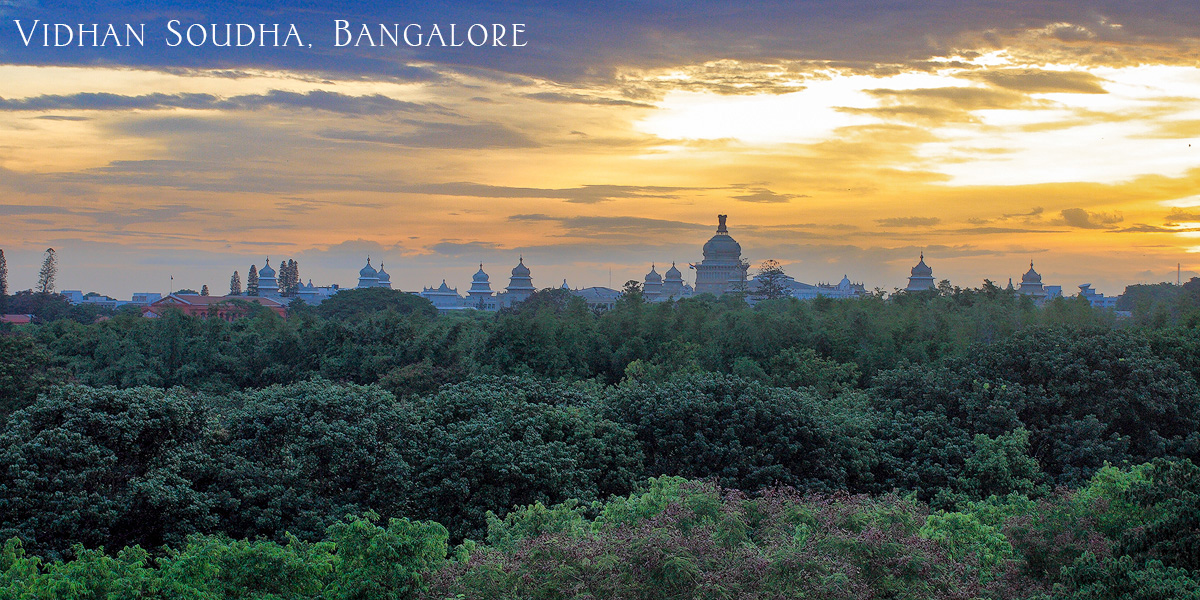
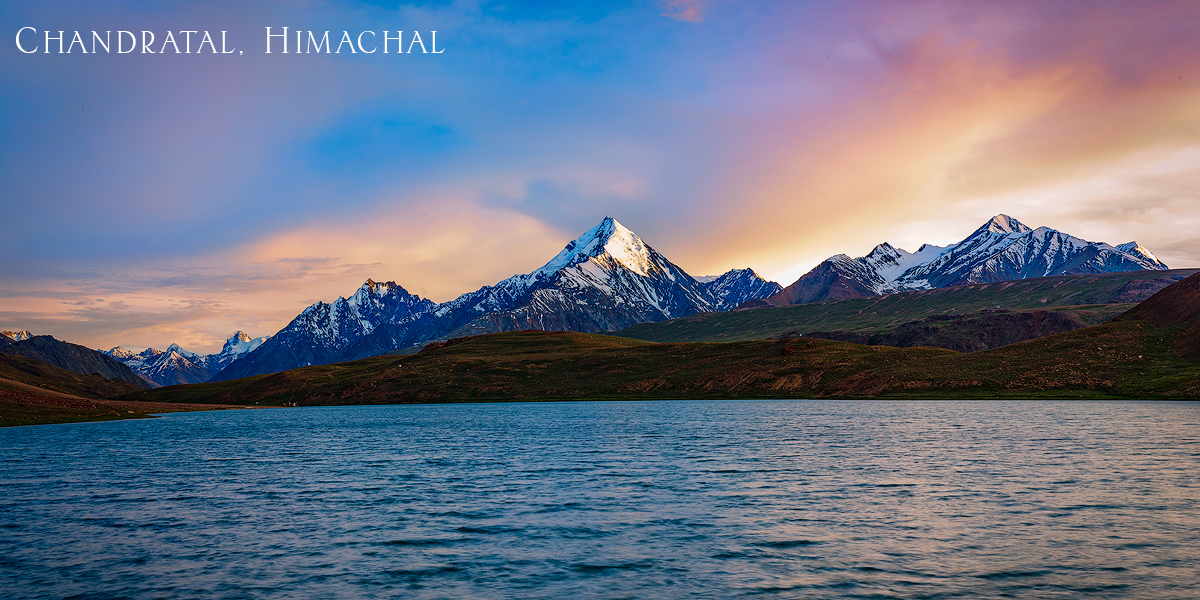
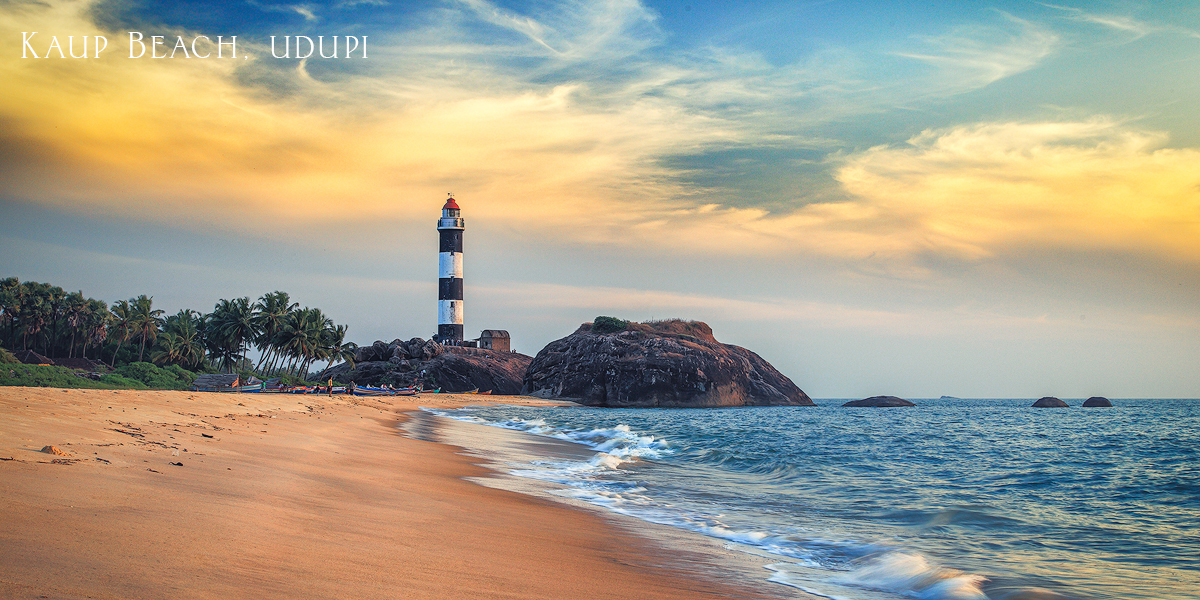
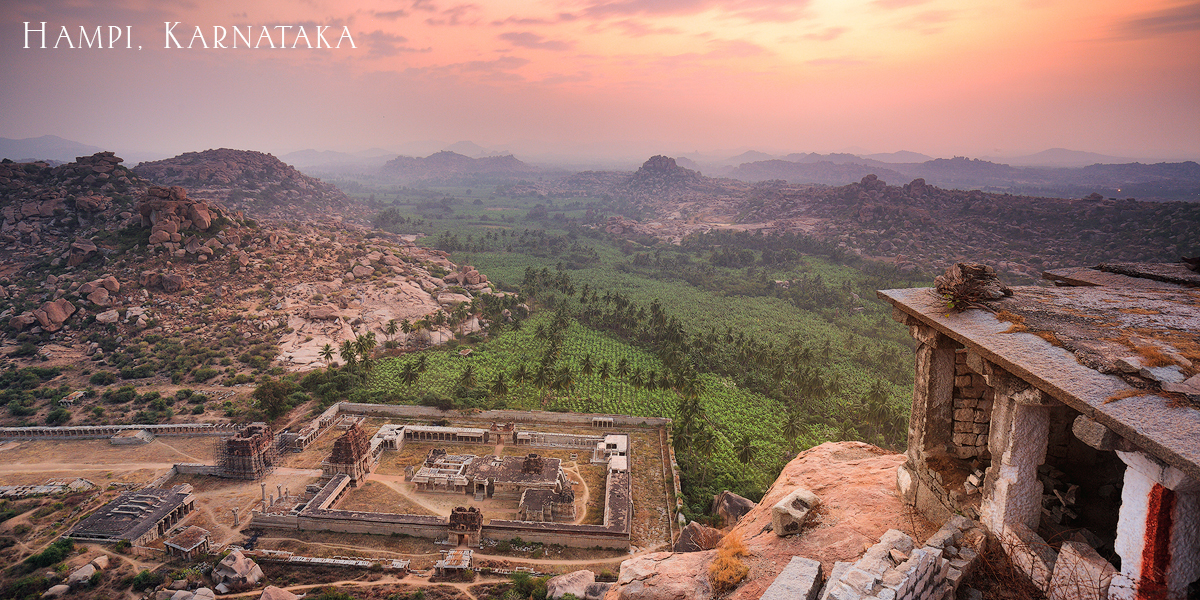
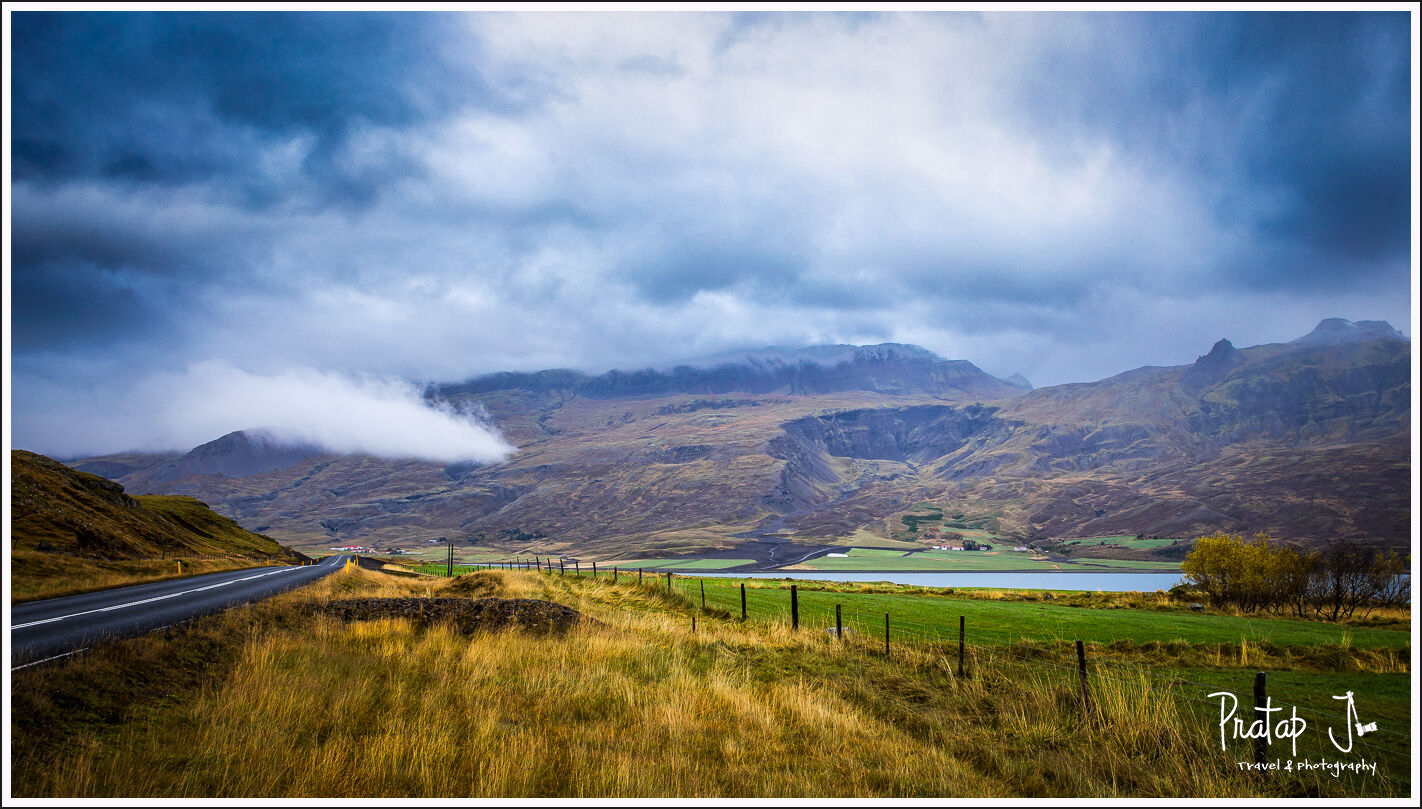
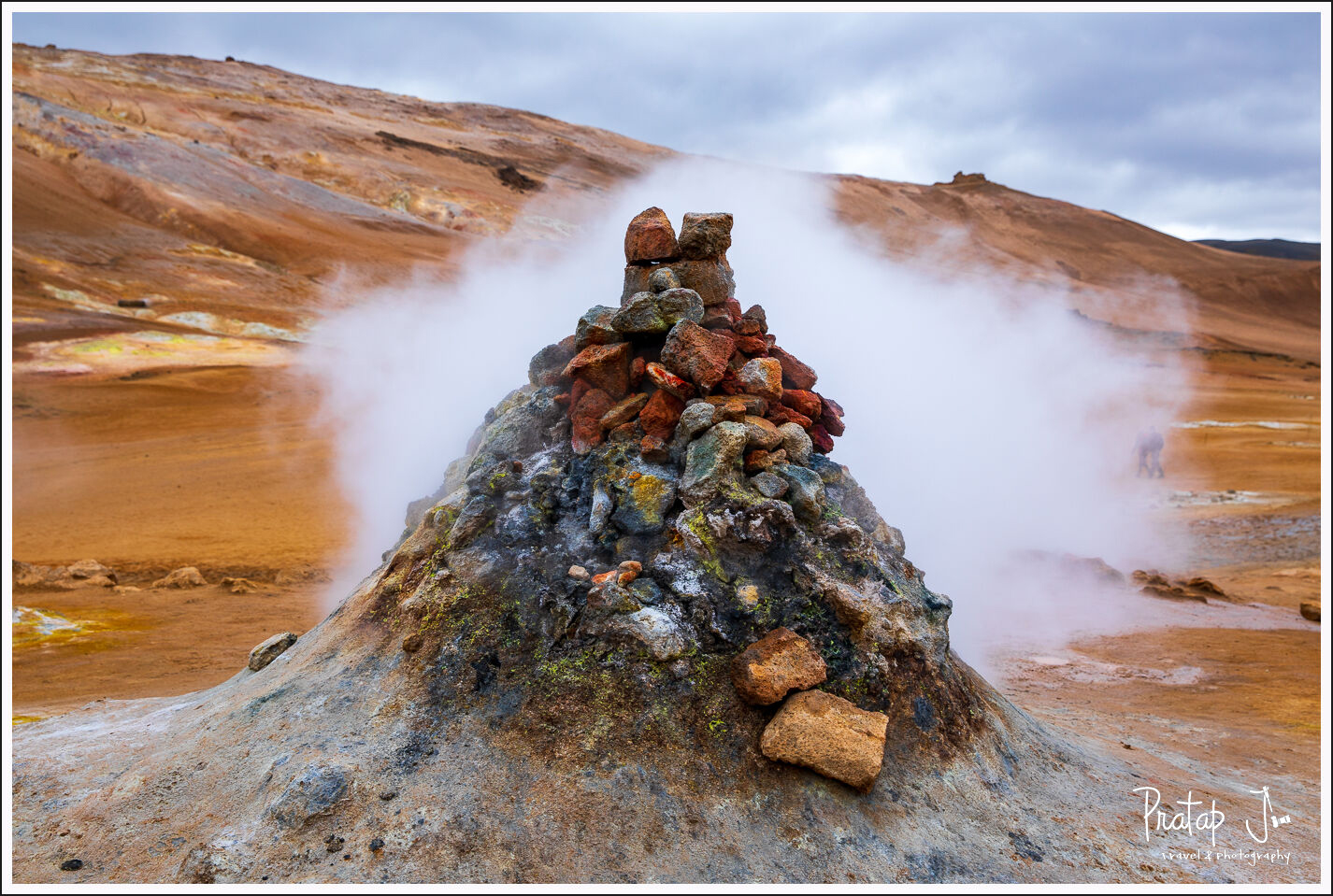
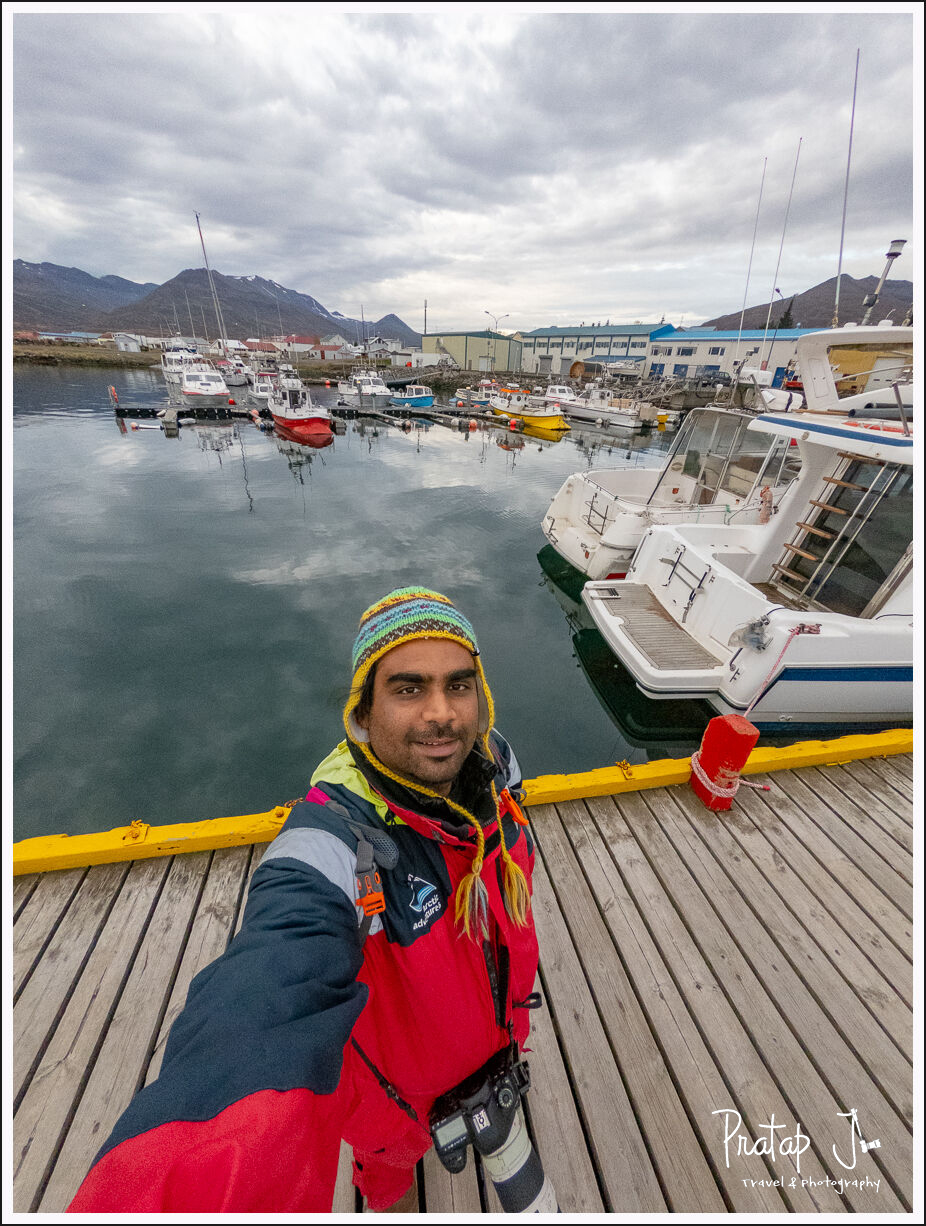


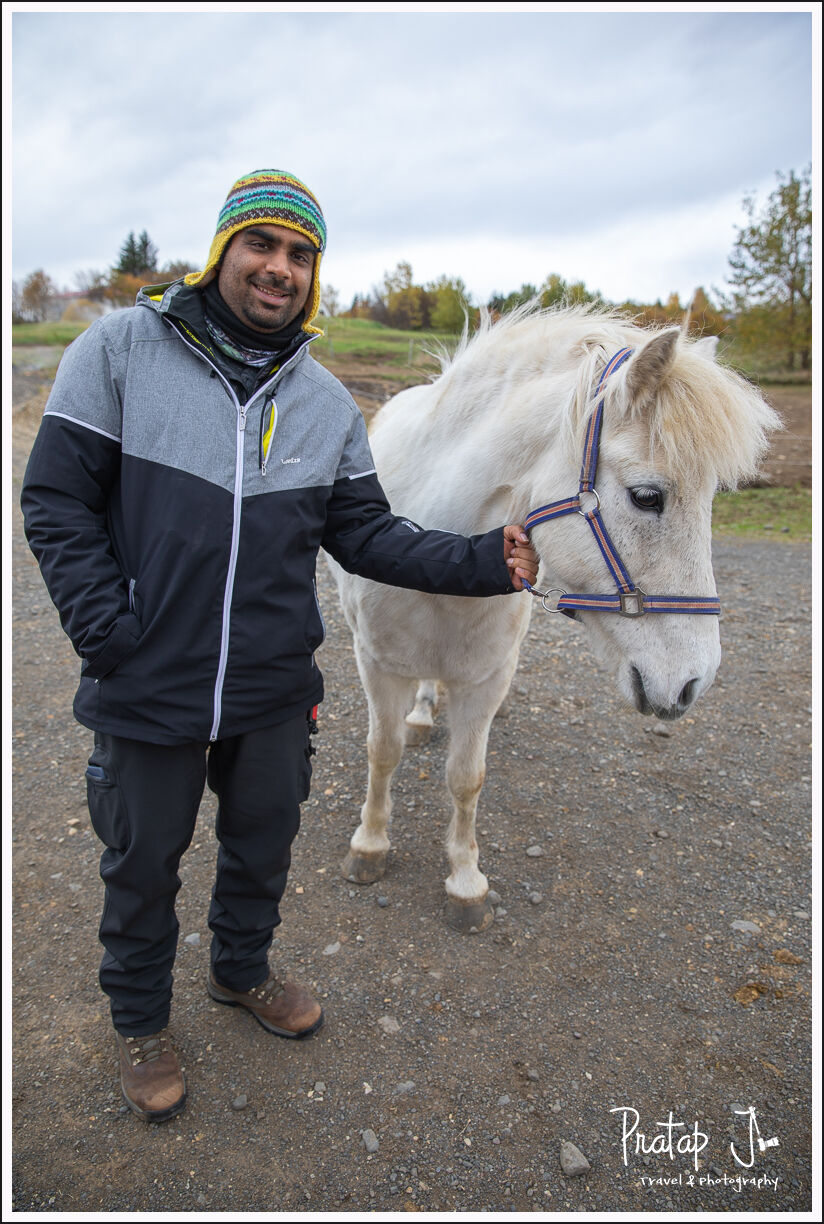
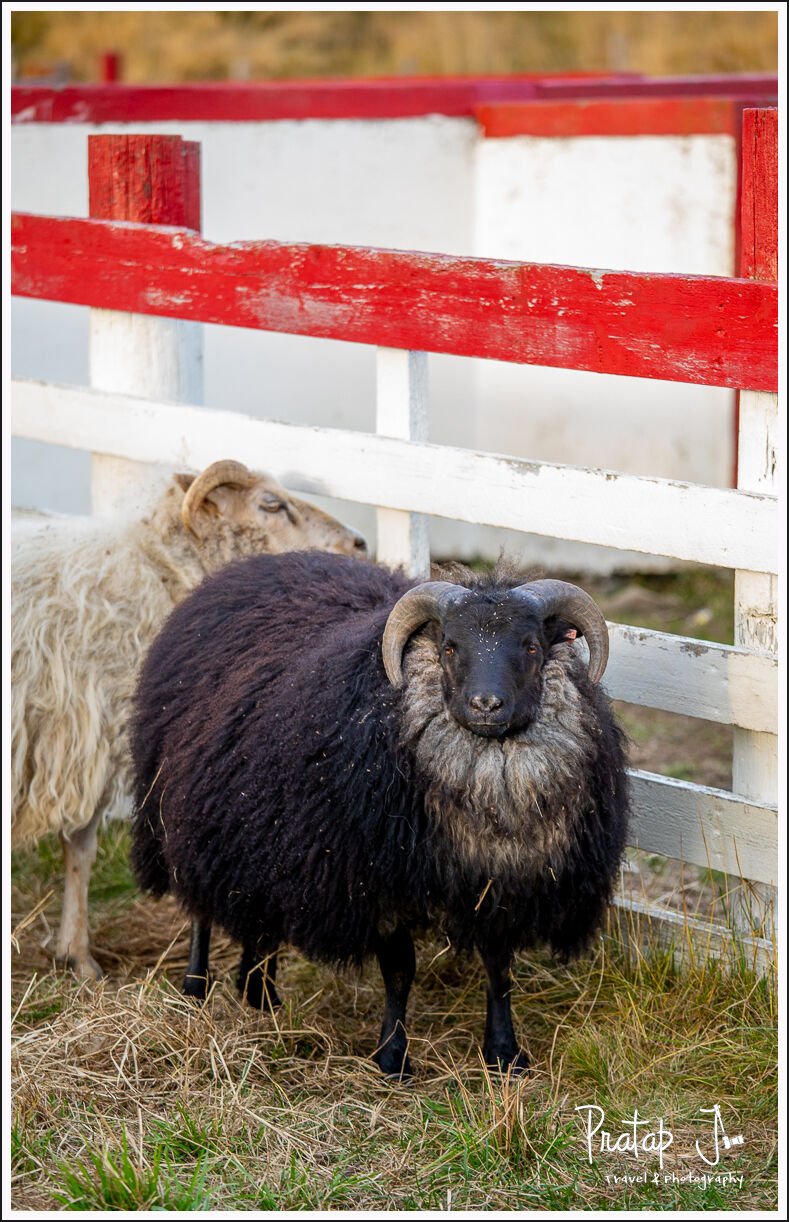
4 Comments
“In part 2 of my blog post, I will talk about how I went about planning this trip, what the takeaways were, and how you can make the most of your Iceland tour if you are a photographer.”
Looking forward to part 2. Great Images.
~ Addy (JJMPF)
Thank you for visiting!
Lovely writeup.
You know You have given me a chance to see a country I will never get to visit. Thank you so much. Your pictures are with out a doubt breathtaking. Because of sharing your pictures, as soon as I complete my book, I would like to send you a copy.